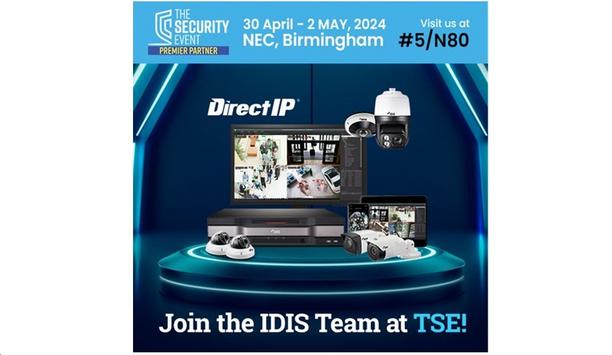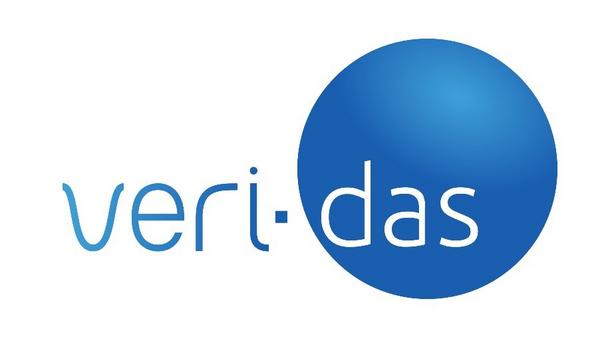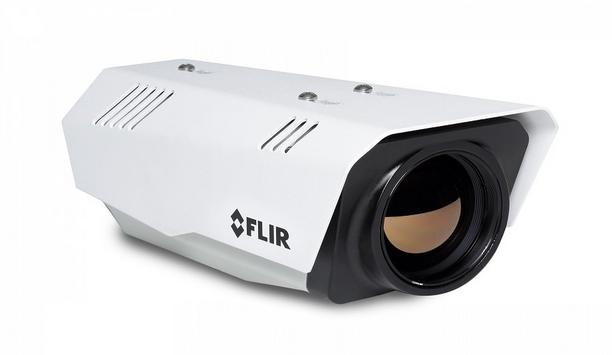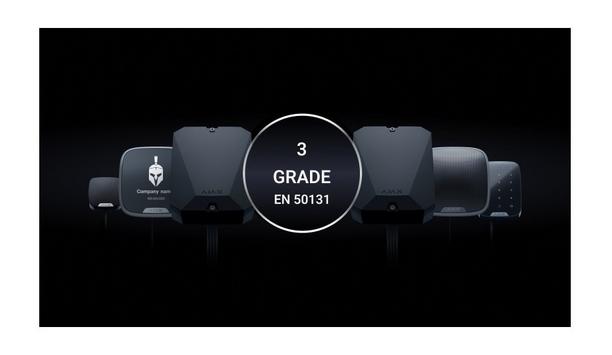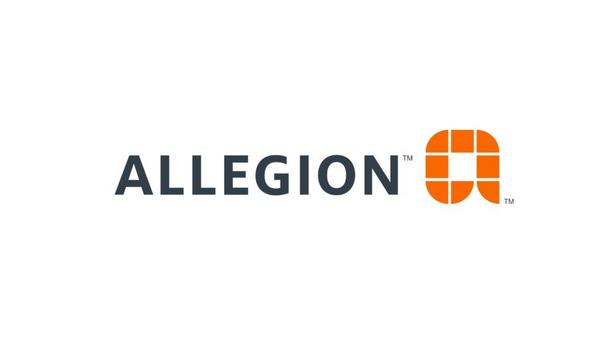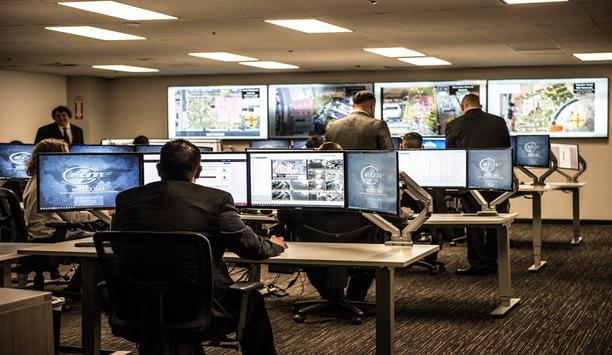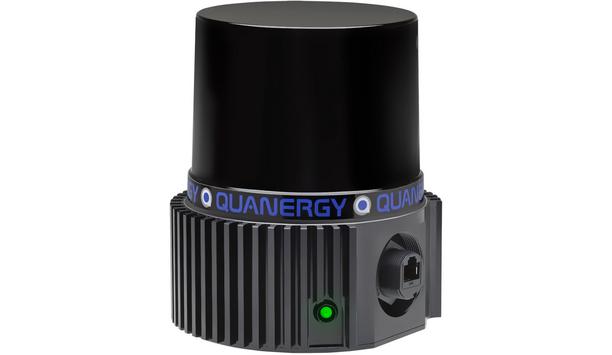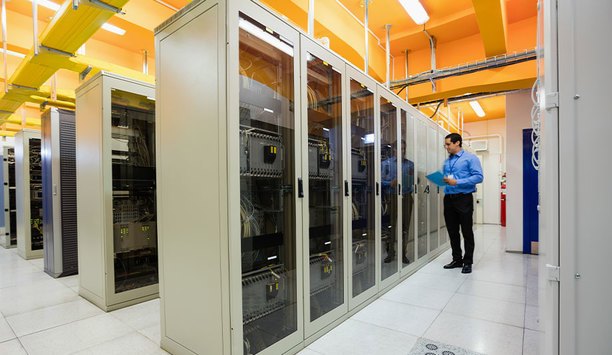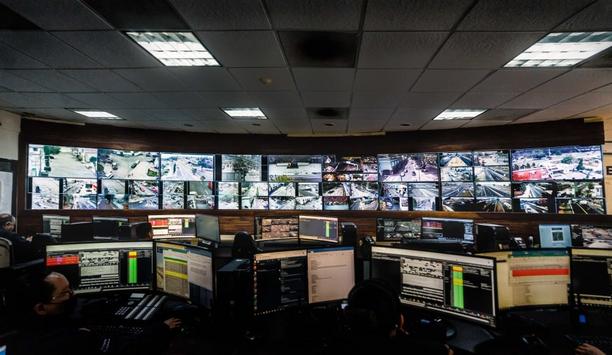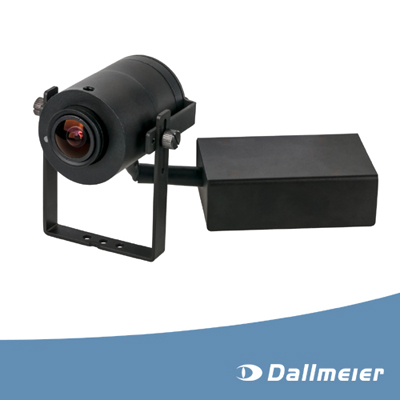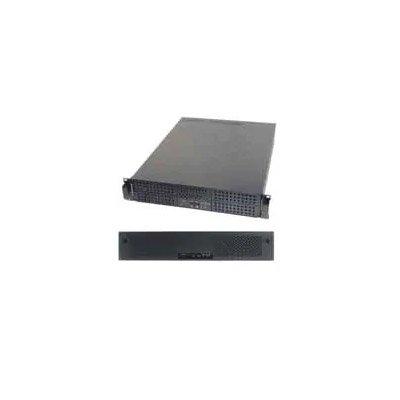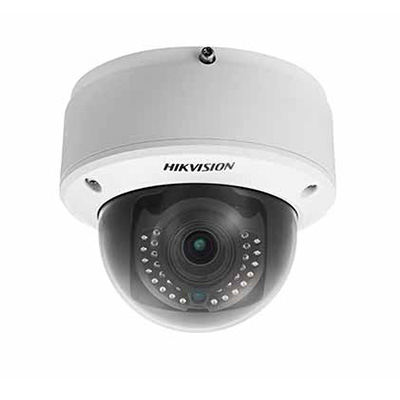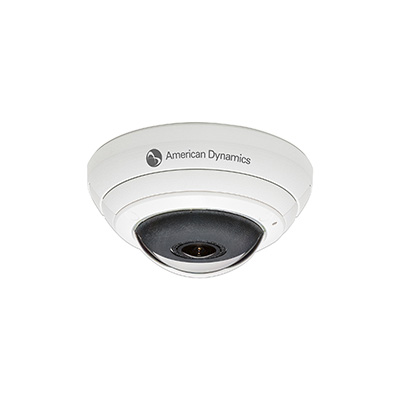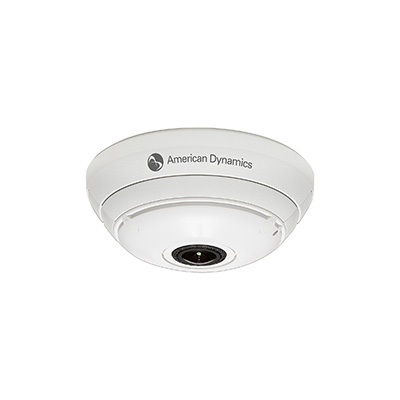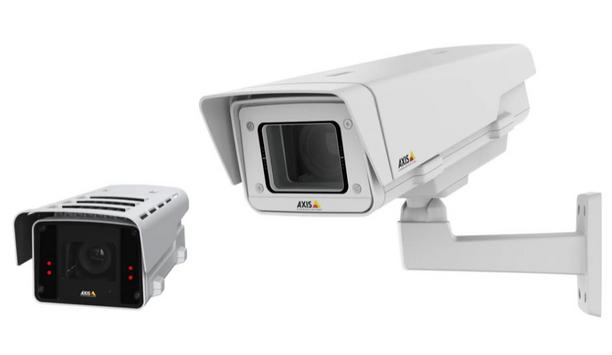Casino security
An expanded range of edge AI cameras and a new, highly robust 2MP video intercom will be showcased by IDIS at The Security Event (Birmingham NEC, 30 April – 2 May, stand 5/N80), a range that is part of IDIS’s end-to-end solutions offering which encompasses everything needed for the widest range of video surveillance projects, from cameras, NVRS, AI box devices, and network accessories, to a choice of VMS. IDIS, South Korea’s largest in-country manufacturer of v...
North American Video (NAV), the security integrator with more casino security system installations and gaming partners across the U.S. than any other systems integration firm, is thrilled to announce its continued support of the World Game Protection Conference (WGPC) 2024 as the exclusive Surveillance Technical Integration Sponsor. The WGPC 2024, taking place February 28-29 at the Tropicana Las Vegas, marks NAV's fourth consecutive year holding the prestigious title. Sponsorship of WGPC...
Video surveillance has been a dominant factor in the casino market since the 1950s when video replaced the use of elevated walkways that allowed casino security personnel to monitor the gaming floor from above. As technology continues to evolve, we can expect to see more innovative uses of video in the casino market. Beyond video, other technologies are also transforming the casino experience. We asked this week’s Expert Panel Roundtable: How are new technologies impacting the casino surve...
From 10 to 13 October, the global airport community will gather for the 24th edition of inter airport Europe at the Munich Trade Fair Centre in Germany. The event returns with an impressive line-up of well over 400 airport suppliers from 37 countries, including seven national pavilions and more than 100 new exhibitors. Live exhibits Visitors can look forward to plenty of live exhibits in the halls and Outdoor Area and a new 600 square metre GSE Experience Area. An exciting event programme in...
ISS (Intelligent Security Systems), a global provider of video intelligence and data awareness solutions, announced that industry veterans Dennis Connor and Jason Lloyd have joined the company as its new Director of Program Management NA and Regional Business Manager for the Midwest respectively. Dennis Connor's responsibilities Connor, who most recently served as Program/Project Manager for CX (customer experience) Initiatives at ADT, will spearhead the development of new end-user and p...
Veridas, the Spanish technology company specialising in digital identity and biometrics, has received accreditation for its Age Estimation Technology from the UK’s Age Check Certification Scheme (ACCS) for Evaluation Assurance Level 2. Age Check Certification Scheme The Age Check Certification Scheme (ACCS) is a UKAS-accredited conformity assessment body, comprised of auditors, certification specialists, and data protection experts. ACCS independently tests and certifies onl...
News
Teledyne FLIR, part of Teledyne Technologies Incorporated announced the release of its new FLIR FC-Series AI, the latest model in its signature fixed camera (FC) series. The FC-Series AI is a thermal security camera with onboard AI analytics that accurately classifies humans and vehicles for early intrusion detection for perimeter protection and remote site monitoring. FC-Series AI With video analytics that combine deep neural network (DNN)- and motion-based analytics, the FC-Series AI offers industry-pioneering intrusion detection, enabling users to expand situational awareness and make better-informed decisions that increase safety and improve coordination and efficiency. Featuring a premium thermal sensor with 640 × 512 full resolution, the FC-Series AI camera creates images based on the heat emitted by humans and objects, rather than relying solely on visible light. Thermal security camera features FC-Series AI enables security operators to see and detect intruders, even in complete darkness, rain, fog, and smoke The thermal imager supports an industry-pioneering thermal sensitivity of <25 milliKelvin (mK), one of the best Noise Equivalent Temperature Difference (NETD) values on the market, enabling the sensor to outperform other thermal cameras whose visibility and detection rates decrease in adverse conditions. Offering eight, high-performance lenses ranging from an 8.6° × 6.6° to a 90° × 69° field of view, the FC-Series AI enables security operators to see and detect intruders, even in complete darkness, rain, fog, and smoke. DNN- and motion-based video analytics The FC-Series AI also combines DNN- and motion-based video analytics for reliable detection, empowering security managers to differentiate between true threats and nuisance alarms. Using FLIR’s curated library of thousands of thermal images, FLIR DNN analytics are trained to classify objects in real-world situations where humans or vehicles may be slightly obscured or challenging to identify or if an intruder attempts to deceive the system. The FC-Series AI also offers target geolocation capabilities and precise handoff to a pan-tilt-zoom device for streamlined target tracking. Perimeter protection, cybersecure solution FC-Series AI camera offers security professionals a high-performing, dependable, and cybersecure solution" “Our new FC-Series AI cameras elevate the possibilities for customers to tighten their perimeter protection strategy,” said Seetha Sasikala, Global Product Solutions Manager at Teledyne FLIR. “Combining DNN- and motion detection-based analytics, industry-pioneering thermal sensitivity, and the widest range of high-performance lenses on the market, the FC-Series AI camera offers security professionals a high-performing, dependable and cybersecure solution for intrusion detection.” NDAA-compliant, IK-10 rated device Designed to maximise the performance of new and existing multilayered physical security systems, the FC-Series AI camera tightly integrates with FLIR UVMS, as well as other third-party video management systems, and is supported by FLIR Nexus software. As an NDAA-compliant device, the FC-Series AI camera offers security professionals extensive cyber protection and peace of mind. With rugged, weatherproof IP66 and IP67 and vandal-proof IK10 ratings, the FC-Series AI provides durable housing.
Integrated Access Control and Security manufacturer TDSi announces it will be showcasing its GARDiS Platform and talking about its new GARDiSVU VMS solution on Stand 2-B28 at Intersec Saudi Arabia 2023, which takes place from 3rd-5th October at the Riyadh International Convention & Exhibition Center. Integrated security systems Managing Director John Davies commented, “We are delighted to announce our forthcoming appearance at Intersec Saudi Arabia at the beginning of October. This will be our first appearance at the show since the pandemic but follows up on several connections and conversations that we started back in June when we held our Security Technology Showcases in both Riyadh and Dammam." "TDSi has been selling products in Saudi Arabia since the 1990s and customers have benefitted from our integrated security systems on many different projects, but this event is the perfect opportunity to see our latest GARDiS products and to learn more about the exciting possibilities they offer.” Vision 2030 projects Vision 2030 projects is an initiative in the Kingdom that is implementing reforms in the public sector A key focus for TDSi at Intersec Saudi Arabia will also be how it can help customers with its Vision 2030 projects, an initiative in the Kingdom that is implementing unprecedented reforms in the public sector, the economy, and society as a whole. In early 2023, TDSi’s International Business Development Director Phil Tennent attended a UK Department of International Trade event focusing on Security Technology and had the opportunity to talk to many companies in Saudi Arabia regarding their Vision 2030 projects. GARDiS and GARDiSVU TDSi’s GARDiS ecosystem of access control software and hardware systems delivers a highly scalable cloud-based solution that utilises wireless technology for ease of installation and use. It is perfect for any secure access control application, including Access Control as a Service. (ACaaS). The recently launched GARDiSVU video management solution, TDSi’s first hybrid-cloud-based CCTV offering, synchronises directly with and complements the GARDiS range, providing customers with a complete solution. Vision 2030 projects John added, “The GARDiS range is the ideal solution for the exciting Vision 2030 projects that are driving the Saudi Arabia security market." "Intersec Saudi Arabia is a great opportunity to see the GARDiS range in person and to meet our expert team who will be available to discuss specific projects as well as broader security requirements. If you are attending the event, be sure to visit TDSi on Stand 2-B28.”
Yet another significant milestone for Ajax Systems. Since August 31, the following Ajax devices are officially Grade 3 certified: Hub Hybrid (2G) MultiTransmitter Fibra StreetSiren Fibra StreetSiren DoubleDeck Fibra HomeSiren Fibra KeyPad Fibra Grade 3 systems Grade 3 systems are used in large enterprises and high-risk facilities where enhanced security is demanded. Ajax systems can cover jewellery and arms stores, banks and financial institutions, ATMs, and other facilities requiring a Grade 3 security level. All devices are already available to order. Stock-keeping units (SKU) Ajax is set to introduce more Grade 3 devices at the Ajax Special Event online on October 20 The stock-keeping units (SKU) remain the same for all devices that receive a Grade 3 certificate. To avoid misunderstanding, packages, and stickers will have a Grade 3 mark to distinguish certified devices. And that’s not all. Several more Ajax devices are in the process of certification. Ajax is set to introduce more Grade 3 devices at the Ajax Special Event online on October 20. Secure a spot and register to hear a thorny yet exciting journey to Grade 3. It’s all about new opportunities Opportunities mean entering new markets and giving the partners a great way to scale. The installers and security companies can cover new objects and build cutting-edge, comprehensive Grade 3 security systems based on the available Ajax devices plus third-party new wired equipment or devices already installed at the facility. MultiTransmitter Fibra The module supports NC, NO, EOL, 2EOL, and 3EOL connections, which makes updating the security system more flexible MultiTransmitter Fibra can integrate any wired dry contact detector into the system. The module supports NC, NO, EOL, 2EOL, and 3EOL connections, which makes updating the security system more flexible. With EOL’s resistance measuring, a unique tool for wired security systems, all values can be assigned automatically to make installation quicker and more comfortable. Saving time and costs A professional set of tools will help save time and costs on installation and make setup and maintenance an easy remote task: Automatic line scanning: The feature finds physically connected Fibra devices not yet assigned to the hub and allows adding them to the system in a few taps. Thus, an installer could scan 100 machines in 10 minutes. Power consumption stress test: It helps to ensure that the system has enough power in any situation. In PRO apps, an installer launches the simulation of maximum power consumption to check the system’s response. Automatic sync with CMS: After the installation and setup, all system settings are automatically downloaded from the cloud server to PRO Desktop. The CMS engineer does not waste time transferring the devices manually. Fibra power supply calculator Professionals have access to free training at Ajax Academy and a dedicated Technical Support team which is available Moreover, professionals have access to various tools and information resources created by Ajax. Use the Fibra power supply calculator to check the security system project. Also, professionals have access to free training at Ajax Academy and a dedicated Technical Support team which is available round the clock, 365 days a year. Intuitive Ajax apps Owners of outdated wired alarm systems receive all signature Ajax technologies to experience a truly smart and reliable way of security. Intuitive Ajax apps provide remote control and all detector information in real-time from anywhere the Internet is available, on a smartphone or PC. With instant notifications, there is no chance of missing an alarm, and automation scenarios enhance security and comfort to the fullest. Availability All announced devices are already available to order. More Grade 3 devices will be disclosed soon at the Ajax Special Event on October 20.
The Security Industry Association (SIA) has launched a new learning management system (LMS) – SIAcademy as part of its efforts to advance industry professionalism through premier education and training. SIAcademy SIAcademy is a living library of on-demand training and professional development programmes designed to enhance security professionals’ industry knowledge, technical skills, and overall job performance. The new LMS offers a modern, simple, and centralised place to access role-based training, certification prep materials, and other relevant educational content anytime, anywhere, and on any device. Dynamic learning tools It offers immense growth opportunities for those who prioritise their professional development" “The launch of the SIAcademy learning management system and course catalogue is a milestone within SIA and for the security industry,” said Dr. Elli Reges, SIA’s director of learning and development. “This robust new platform offers dynamic learning tools to help learners and employers harness and unleash individual performance potential through customisable learning pathways and strategic investments in human capital, and it offers immense growth opportunity for those who prioritise their professional development.” Features of the LMS SIAcademy, powered by the cloud, delivers on-demand e-learning offerings and live online courses. Features of the new system include: Easy accessibility and a mobile-friendly interface. Interactive engagement tools and gamification. Continuing education credits. When accessing SIAcademy, members can find content such as: SIA’s Security Project Management (SPM) training. SIA’s Security Cornerstones series is designed for new employee onboarding. A microlearning series created to propel young professionals’ knowledge and growth. A training course on the federal grants life cycle and security-related grant programmes. On-demand SIAcademy LIVE! courses on video security, access control, sales, and more. Materials and guidelines to help members prepare for the Security Industry Cybersecurity Certification (SICC) exam. Key learning objections SIA member companies will be able to create their customisable microsites “I think learners will be very pleased with the new capabilities of SIAcademy! It allows us to facilitate more engagement through discussion boards and other features and reinforce key learning objectives with interactive gamification tools,” said DeAndre Thornton, SIA’s manager of learning and development. Through SIAcademy’s microsite capability, which SIA plans to make available shortly, SIA member companies will be able to create their customisable microsites, on which they can build their own content and licence content from SIA’s LMS to develop learning plans for their teams, partners and/or clients. SST Apprenticeship programme SIA’s new Security Systems Technician (SST) Apprenticeship programme, using the SIAcademy microsite capability, will provide participating employers with access to more than 100 hours of curated e-learning content. SIA members are invited to contribute educational course content that is product-agnostic and vendor-neutral to support apprentice knowledge and skill development in designated competency areas.
Dahua's latest DSS Pro V8.3 enhancement equips security personnel with advanced tools, enabling them to rapidly identify and monitor suspicious individuals' movements in just seconds. It is a cutting-edge Video Management Software (VMS) security solution designed for efficiency and scalability. It leverages users' video security systems to help them make informed decisions quickly and serves as the backbone of the operation. AcuPick Technology The key upgrades primarily focus on integrating Dahua's advanced algorithm, AcuPick Technology, which helps investigators save time in searching for and identifying people of interest. The feature also supports multiple user logins with specific permissions for up to 200 individuals simultaneously. Remote-control capability The company predicts that this upgrade will foster digital transformation across various sectors Another feature is the remote-control capability, which enables security staff to monitor and track events from anywhere, whether they are on the move or at home. The company predicts that this upgrade will foster digital transformation across various sectors and empower stakeholders from retail, residential, and other sectors to become more digital and efficient. Integrated Search Algorithm Traditional security methods demand frame-by-frame analysis of hours of video footage. With AcuPick, all searchable targets can be scanned instantly. The search algorithm breaks up people and vehicle objects into feature values that are sent to the DSS platform for processing. DSS saves these feature values to its database and finds the target object by comparing the feature values. Streamlines the user experience Even without clear details, security staff can find and track a person or vehicle of interest using a single reference image. Upon selecting a person, individuals will instantly see a history of each appearance on all AcuPick-enabled cameras throughout the premises. DSS Pro 8.3 streamlines the user experience, eliminating the need for lengthy training sessions. The process is as simple as installing AcuPick, selecting the target, viewing the desired thumbnails, and receiving video feedback instantly. Enhanced Workflow This allows users to easily see personal assignments for each door and personnel situation DSS Pro V8.3 also introduces a clearer assignment system, simplifying the entire workflow. The workflow is divided into three groups – staff assignment, safeguarding doors, and the routes connecting the two. This allows users to easily see personal assignments for each door and personnel situation. Visualised and intuitive dashboard The company has improved its user interface to offer a more visualised and intuitive dashboard. This upgraded feature provides a comprehensive overview of peak times, equipment status, and other vital information, making it easier for stakeholders to manage their security systems. Existing stakeholders enjoy these updates free of charge. While clients are required to purchase their servers for data storage, data transfer during a DSS Pro upgrade is an additional cost.
Allegion U.S., a provider of security products and solutions, unveiled the results of a new multifamily living trends survey that provides insight into the preferences and expectations of the current renters. New technologies, amenities The report, “2023 Multifamily Living Trends: A Study on What Multifamily Renters Desire, Expect and Will Pay More For in Their Residences,” analyses input from over 1,000 survey respondents who currently rent or own multifamily residences or plan to in the next two years. Beyond the value of safety, residents’ peace of mind, and the rise of mobile access control, the survey shows how COVID-19 and the influx in Proptech have accelerated the adoption of new technologies and amenities designed to enhance the lifestyles of current renters. The changing multifamily landscape Increased adoption of smart home technology, re-prioritisation of amenities, and new preferences In 2019, Allegion conducted a similar study, providing a benchmark for living trends among millennial renters. Over the last four years, the multifamily landscape has changed in significant ways both for renters and property owners, alike: the increased adoption of smart home technology, re-prioritisation of amenities, and new preferences in leasing and communication are evident. Impact of Proptech adoption, lifestyle changes “Multifamily has always been a dynamic market as a result of changing lifestyle behaviours and introduction of new property technologies,” said Connie Alexander, senior manager for primary research & insights at Allegion. “Our research reveals that we are witnessing the impact of Proptech adoption and lifestyle changes following the pandemic. Property owners need to take note of these shifts to best allocate short- and long-term investments in their properties that will help attract and retain quality residents.” Key trends and challenges The key trends and challenges examined in the report are outlined below: 1) Impact of Proptech on Multifamily Residences - In 2021, $24.3B was invested into Proptech companies globally, with a focus on the multifamily market. Proptech can help attract responsible, high-quality residents and provide enhanced and safer cross-property amenities, lower operating costs and increase revenue. 61% of survey respondents said they are comfortable using Proptech. Smart locks, resident portals, and cameras were included in these preferences. According to the survey results, 51% of renters who make more than $100,000 per year view smart home technology as a need-to-have amenity and 48% of those same renters view Proptech as a must-have. More than one in two respondents would be willing to pay one to 10% more for property technology and nearly three in 10 would pay at least 11% more. 2) The Rise of Mobile Access Control - With most of the population having access to smartphones the rise of mobile access control provides renters with a convenient and secure way to access different parts of their multifamily property. Over 59% of respondents would likely select a future place of residence if it had mobile access control offered as an amenity. Compared to the 2019 study, there was an 82% increase (to 34% from 19%) in the number of respondents who would be willing to pay more for mobile access control that would allow them to remotely monitor entry of their home and give access to guests and others. 3) Amenities That Attract Based on New Behaviours - COVID-19 had a profound and lasting effect on consumer behaviour and lifestyles. Multifamily residents are no different. According to Pew Research, 70% of individuals will continue with the at-home habits they adopted during the pandemic. When asked about considerations for a future place of residence, respondents ranked free Wi-Fi as the most important amenity, behind affordability and proximity to work and school. Among those working remotely (15% remote, 20% hybrid work lifestyles among respondents), fast and reliable Wi-Fi is the most important factor when looking for a place of residence. Home security systems, smart home technologies, and upgraded building materials ranked more important overall than fitness centres and pools. 4) Value of Safety and Resident Peace of Mind - According to the 2021 World Risk Poll by the LP Foundation, 37% of people in the U.S. feel less safe than they did just three years ago. Fewer than one in three respondents feel secure in all areas of their home, and about one in five do not feel secure in the basement, living room, and/or patio. Up to 140% from 2019, 22% of respondents currently use electronic door locks that are connected to the internet. And up 91% from 2019, 23% of respondents currently use electronic door locks that are not connected to the internet. More than one in three respondents would be willing to pay more for smart doorbells with video, outdoor cameras, and mobile access control. Six in 10 would pay between one and 10% more per month for these added security features. Only 19% of respondents are comfortable giving their family and friends access codes or keys to their unit. However, 47% are comfortable hiding keys to their apartment around the exterior of their home in the event they get locked out. 5) Leasing Preferences That Convert - A survey released from the National Apartment Association’s Apartmentalise 2022 conference found over 60% of property managers cite creating efficient day-to-day operations as one of their top three challenges. Efficient communication with prospective and current residents can enable a positive ROI and a differentiating experience for renters that results in increased attraction and retention. 16% of respondents noted inattentive property management as a top three dealbreaker when considering a future place of residence. More than three in four respondents are at least somewhat comfortable with all four self-guided tour scenarios below, and less than 10% are either somewhat or very uncomfortable with them. Take a self-guided tour that allows users to freely explore a community. Take a self-guided tour with detailed instructions on what users can explore. Living in a community that allows potential tenants to explore the area on a self-guided tour. Taking a self-guided tour and having the ability to immediately sign a lease before leaving. According to the survey, residents with incomes of over $100,000 per year are statistically more comfortable navigating self-guided tours and signing a lease directly following. When asked how valuable different amenities were in a future residence, a streamlined resident portal app was ranked number one with 39% of respondents saying it was a must-have and 50% a nice-to-have.
Teledyne FLIR, part of Teledyne Technologies Incorporated announced the release of its new FLIR FC-Series AI, the latest model in its signature fixed camera (FC) series. The FC-Series AI is a thermal security camera with onboard AI analytics that accurately classifies humans and vehicles for early intrusion detection for perimeter protection and remote site monitoring. FC-Series AI With video analytics that combine deep neural network (DNN)- and motion-based analytics, the FC-Series AI offers industry-pioneering intrusion detection, enabling users to expand situational awareness and make better-informed decisions that increase safety and improve coordination and efficiency. Featuring a premium thermal sensor with 640 × 512 full resolution, the FC-Series AI camera creates images based on the heat emitted by humans and objects, rather than relying solely on visible light. Thermal security camera features FC-Series AI enables security operators to see and detect intruders, even in complete darkness, rain, fog, and smoke The thermal imager supports an industry-pioneering thermal sensitivity of <25 milliKelvin (mK), one of the best Noise Equivalent Temperature Difference (NETD) values on the market, enabling the sensor to outperform other thermal cameras whose visibility and detection rates decrease in adverse conditions. Offering eight, high-performance lenses ranging from an 8.6° × 6.6° to a 90° × 69° field of view, the FC-Series AI enables security operators to see and detect intruders, even in complete darkness, rain, fog, and smoke. DNN- and motion-based video analytics The FC-Series AI also combines DNN- and motion-based video analytics for reliable detection, empowering security managers to differentiate between true threats and nuisance alarms. Using FLIR’s curated library of thousands of thermal images, FLIR DNN analytics are trained to classify objects in real-world situations where humans or vehicles may be slightly obscured or challenging to identify or if an intruder attempts to deceive the system. The FC-Series AI also offers target geolocation capabilities and precise handoff to a pan-tilt-zoom device for streamlined target tracking. Perimeter protection, cybersecure solution FC-Series AI camera offers security professionals a high-performing, dependable, and cybersecure solution" “Our new FC-Series AI cameras elevate the possibilities for customers to tighten their perimeter protection strategy,” said Seetha Sasikala, Global Product Solutions Manager at Teledyne FLIR. “Combining DNN- and motion detection-based analytics, industry-pioneering thermal sensitivity, and the widest range of high-performance lenses on the market, the FC-Series AI camera offers security professionals a high-performing, dependable and cybersecure solution for intrusion detection.” NDAA-compliant, IK-10 rated device Designed to maximise the performance of new and existing multilayered physical security systems, the FC-Series AI camera tightly integrates with FLIR UVMS, as well as other third-party video management systems, and is supported by FLIR Nexus software. As an NDAA-compliant device, the FC-Series AI camera offers security professionals extensive cyber protection and peace of mind. With rugged, weatherproof IP66 and IP67 and vandal-proof IK10 ratings, the FC-Series AI provides durable housing.
Integrated Access Control and Security manufacturer TDSi announces it will be showcasing its GARDiS Platform and talking about its new GARDiSVU VMS solution on Stand 2-B28 at Intersec Saudi Arabia 2023, which takes place from 3rd-5th October at the Riyadh International Convention & Exhibition Center. Integrated security systems Managing Director John Davies commented, “We are delighted to announce our forthcoming appearance at Intersec Saudi Arabia at the beginning of October. This will be our first appearance at the show since the pandemic but follows up on several connections and conversations that we started back in June when we held our Security Technology Showcases in both Riyadh and Dammam." "TDSi has been selling products in Saudi Arabia since the 1990s and customers have benefitted from our integrated security systems on many different projects, but this event is the perfect opportunity to see our latest GARDiS products and to learn more about the exciting possibilities they offer.” Vision 2030 projects Vision 2030 projects is an initiative in the Kingdom that is implementing reforms in the public sector A key focus for TDSi at Intersec Saudi Arabia will also be how it can help customers with its Vision 2030 projects, an initiative in the Kingdom that is implementing unprecedented reforms in the public sector, the economy, and society as a whole. In early 2023, TDSi’s International Business Development Director Phil Tennent attended a UK Department of International Trade event focusing on Security Technology and had the opportunity to talk to many companies in Saudi Arabia regarding their Vision 2030 projects. GARDiS and GARDiSVU TDSi’s GARDiS ecosystem of access control software and hardware systems delivers a highly scalable cloud-based solution that utilises wireless technology for ease of installation and use. It is perfect for any secure access control application, including Access Control as a Service. (ACaaS). The recently launched GARDiSVU video management solution, TDSi’s first hybrid-cloud-based CCTV offering, synchronises directly with and complements the GARDiS range, providing customers with a complete solution. Vision 2030 projects John added, “The GARDiS range is the ideal solution for the exciting Vision 2030 projects that are driving the Saudi Arabia security market." "Intersec Saudi Arabia is a great opportunity to see the GARDiS range in person and to meet our expert team who will be available to discuss specific projects as well as broader security requirements. If you are attending the event, be sure to visit TDSi on Stand 2-B28.”
Yet another significant milestone for Ajax Systems. Since August 31, the following Ajax devices are officially Grade 3 certified: Hub Hybrid (2G) MultiTransmitter Fibra StreetSiren Fibra StreetSiren DoubleDeck Fibra HomeSiren Fibra KeyPad Fibra Grade 3 systems Grade 3 systems are used in large enterprises and high-risk facilities where enhanced security is demanded. Ajax systems can cover jewellery and arms stores, banks and financial institutions, ATMs, and other facilities requiring a Grade 3 security level. All devices are already available to order. Stock-keeping units (SKU) Ajax is set to introduce more Grade 3 devices at the Ajax Special Event online on October 20 The stock-keeping units (SKU) remain the same for all devices that receive a Grade 3 certificate. To avoid misunderstanding, packages, and stickers will have a Grade 3 mark to distinguish certified devices. And that’s not all. Several more Ajax devices are in the process of certification. Ajax is set to introduce more Grade 3 devices at the Ajax Special Event online on October 20. Secure a spot and register to hear a thorny yet exciting journey to Grade 3. It’s all about new opportunities Opportunities mean entering new markets and giving the partners a great way to scale. The installers and security companies can cover new objects and build cutting-edge, comprehensive Grade 3 security systems based on the available Ajax devices plus third-party new wired equipment or devices already installed at the facility. MultiTransmitter Fibra The module supports NC, NO, EOL, 2EOL, and 3EOL connections, which makes updating the security system more flexible MultiTransmitter Fibra can integrate any wired dry contact detector into the system. The module supports NC, NO, EOL, 2EOL, and 3EOL connections, which makes updating the security system more flexible. With EOL’s resistance measuring, a unique tool for wired security systems, all values can be assigned automatically to make installation quicker and more comfortable. Saving time and costs A professional set of tools will help save time and costs on installation and make setup and maintenance an easy remote task: Automatic line scanning: The feature finds physically connected Fibra devices not yet assigned to the hub and allows adding them to the system in a few taps. Thus, an installer could scan 100 machines in 10 minutes. Power consumption stress test: It helps to ensure that the system has enough power in any situation. In PRO apps, an installer launches the simulation of maximum power consumption to check the system’s response. Automatic sync with CMS: After the installation and setup, all system settings are automatically downloaded from the cloud server to PRO Desktop. The CMS engineer does not waste time transferring the devices manually. Fibra power supply calculator Professionals have access to free training at Ajax Academy and a dedicated Technical Support team which is available Moreover, professionals have access to various tools and information resources created by Ajax. Use the Fibra power supply calculator to check the security system project. Also, professionals have access to free training at Ajax Academy and a dedicated Technical Support team which is available round the clock, 365 days a year. Intuitive Ajax apps Owners of outdated wired alarm systems receive all signature Ajax technologies to experience a truly smart and reliable way of security. Intuitive Ajax apps provide remote control and all detector information in real-time from anywhere the Internet is available, on a smartphone or PC. With instant notifications, there is no chance of missing an alarm, and automation scenarios enhance security and comfort to the fullest. Availability All announced devices are already available to order. More Grade 3 devices will be disclosed soon at the Ajax Special Event on October 20.
The Security Industry Association (SIA) has launched a new learning management system (LMS) – SIAcademy as part of its efforts to advance industry professionalism through premier education and training. SIAcademy SIAcademy is a living library of on-demand training and professional development programmes designed to enhance security professionals’ industry knowledge, technical skills, and overall job performance. The new LMS offers a modern, simple, and centralised place to access role-based training, certification prep materials, and other relevant educational content anytime, anywhere, and on any device. Dynamic learning tools It offers immense growth opportunities for those who prioritise their professional development" “The launch of the SIAcademy learning management system and course catalogue is a milestone within SIA and for the security industry,” said Dr. Elli Reges, SIA’s director of learning and development. “This robust new platform offers dynamic learning tools to help learners and employers harness and unleash individual performance potential through customisable learning pathways and strategic investments in human capital, and it offers immense growth opportunity for those who prioritise their professional development.” Features of the LMS SIAcademy, powered by the cloud, delivers on-demand e-learning offerings and live online courses. Features of the new system include: Easy accessibility and a mobile-friendly interface. Interactive engagement tools and gamification. Continuing education credits. When accessing SIAcademy, members can find content such as: SIA’s Security Project Management (SPM) training. SIA’s Security Cornerstones series is designed for new employee onboarding. A microlearning series created to propel young professionals’ knowledge and growth. A training course on the federal grants life cycle and security-related grant programmes. On-demand SIAcademy LIVE! courses on video security, access control, sales, and more. Materials and guidelines to help members prepare for the Security Industry Cybersecurity Certification (SICC) exam. Key learning objections SIA member companies will be able to create their customisable microsites “I think learners will be very pleased with the new capabilities of SIAcademy! It allows us to facilitate more engagement through discussion boards and other features and reinforce key learning objectives with interactive gamification tools,” said DeAndre Thornton, SIA’s manager of learning and development. Through SIAcademy’s microsite capability, which SIA plans to make available shortly, SIA member companies will be able to create their customisable microsites, on which they can build their own content and licence content from SIA’s LMS to develop learning plans for their teams, partners and/or clients. SST Apprenticeship programme SIA’s new Security Systems Technician (SST) Apprenticeship programme, using the SIAcademy microsite capability, will provide participating employers with access to more than 100 hours of curated e-learning content. SIA members are invited to contribute educational course content that is product-agnostic and vendor-neutral to support apprentice knowledge and skill development in designated competency areas.
Dahua's latest DSS Pro V8.3 enhancement equips security personnel with advanced tools, enabling them to rapidly identify and monitor suspicious individuals' movements in just seconds. It is a cutting-edge Video Management Software (VMS) security solution designed for efficiency and scalability. It leverages users' video security systems to help them make informed decisions quickly and serves as the backbone of the operation. AcuPick Technology The key upgrades primarily focus on integrating Dahua's advanced algorithm, AcuPick Technology, which helps investigators save time in searching for and identifying people of interest. The feature also supports multiple user logins with specific permissions for up to 200 individuals simultaneously. Remote-control capability The company predicts that this upgrade will foster digital transformation across various sectors Another feature is the remote-control capability, which enables security staff to monitor and track events from anywhere, whether they are on the move or at home. The company predicts that this upgrade will foster digital transformation across various sectors and empower stakeholders from retail, residential, and other sectors to become more digital and efficient. Integrated Search Algorithm Traditional security methods demand frame-by-frame analysis of hours of video footage. With AcuPick, all searchable targets can be scanned instantly. The search algorithm breaks up people and vehicle objects into feature values that are sent to the DSS platform for processing. DSS saves these feature values to its database and finds the target object by comparing the feature values. Streamlines the user experience Even without clear details, security staff can find and track a person or vehicle of interest using a single reference image. Upon selecting a person, individuals will instantly see a history of each appearance on all AcuPick-enabled cameras throughout the premises. DSS Pro 8.3 streamlines the user experience, eliminating the need for lengthy training sessions. The process is as simple as installing AcuPick, selecting the target, viewing the desired thumbnails, and receiving video feedback instantly. Enhanced Workflow This allows users to easily see personal assignments for each door and personnel situation DSS Pro V8.3 also introduces a clearer assignment system, simplifying the entire workflow. The workflow is divided into three groups – staff assignment, safeguarding doors, and the routes connecting the two. This allows users to easily see personal assignments for each door and personnel situation. Visualised and intuitive dashboard The company has improved its user interface to offer a more visualised and intuitive dashboard. This upgraded feature provides a comprehensive overview of peak times, equipment status, and other vital information, making it easier for stakeholders to manage their security systems. Existing stakeholders enjoy these updates free of charge. While clients are required to purchase their servers for data storage, data transfer during a DSS Pro upgrade is an additional cost.
Allegion U.S., a provider of security products and solutions, unveiled the results of a new multifamily living trends survey that provides insight into the preferences and expectations of the current renters. New technologies, amenities The report, “2023 Multifamily Living Trends: A Study on What Multifamily Renters Desire, Expect and Will Pay More For in Their Residences,” analyses input from over 1,000 survey respondents who currently rent or own multifamily residences or plan to in the next two years. Beyond the value of safety, residents’ peace of mind, and the rise of mobile access control, the survey shows how COVID-19 and the influx in Proptech have accelerated the adoption of new technologies and amenities designed to enhance the lifestyles of current renters. The changing multifamily landscape Increased adoption of smart home technology, re-prioritisation of amenities, and new preferences In 2019, Allegion conducted a similar study, providing a benchmark for living trends among millennial renters. Over the last four years, the multifamily landscape has changed in significant ways both for renters and property owners, alike: the increased adoption of smart home technology, re-prioritisation of amenities, and new preferences in leasing and communication are evident. Impact of Proptech adoption, lifestyle changes “Multifamily has always been a dynamic market as a result of changing lifestyle behaviours and introduction of new property technologies,” said Connie Alexander, senior manager for primary research & insights at Allegion. “Our research reveals that we are witnessing the impact of Proptech adoption and lifestyle changes following the pandemic. Property owners need to take note of these shifts to best allocate short- and long-term investments in their properties that will help attract and retain quality residents.” Key trends and challenges The key trends and challenges examined in the report are outlined below: 1) Impact of Proptech on Multifamily Residences - In 2021, $24.3B was invested into Proptech companies globally, with a focus on the multifamily market. Proptech can help attract responsible, high-quality residents and provide enhanced and safer cross-property amenities, lower operating costs and increase revenue. 61% of survey respondents said they are comfortable using Proptech. Smart locks, resident portals, and cameras were included in these preferences. According to the survey results, 51% of renters who make more than $100,000 per year view smart home technology as a need-to-have amenity and 48% of those same renters view Proptech as a must-have. More than one in two respondents would be willing to pay one to 10% more for property technology and nearly three in 10 would pay at least 11% more. 2) The Rise of Mobile Access Control - With most of the population having access to smartphones the rise of mobile access control provides renters with a convenient and secure way to access different parts of their multifamily property. Over 59% of respondents would likely select a future place of residence if it had mobile access control offered as an amenity. Compared to the 2019 study, there was an 82% increase (to 34% from 19%) in the number of respondents who would be willing to pay more for mobile access control that would allow them to remotely monitor entry of their home and give access to guests and others. 3) Amenities That Attract Based on New Behaviours - COVID-19 had a profound and lasting effect on consumer behaviour and lifestyles. Multifamily residents are no different. According to Pew Research, 70% of individuals will continue with the at-home habits they adopted during the pandemic. When asked about considerations for a future place of residence, respondents ranked free Wi-Fi as the most important amenity, behind affordability and proximity to work and school. Among those working remotely (15% remote, 20% hybrid work lifestyles among respondents), fast and reliable Wi-Fi is the most important factor when looking for a place of residence. Home security systems, smart home technologies, and upgraded building materials ranked more important overall than fitness centres and pools. 4) Value of Safety and Resident Peace of Mind - According to the 2021 World Risk Poll by the LP Foundation, 37% of people in the U.S. feel less safe than they did just three years ago. Fewer than one in three respondents feel secure in all areas of their home, and about one in five do not feel secure in the basement, living room, and/or patio. Up to 140% from 2019, 22% of respondents currently use electronic door locks that are connected to the internet. And up 91% from 2019, 23% of respondents currently use electronic door locks that are not connected to the internet. More than one in three respondents would be willing to pay more for smart doorbells with video, outdoor cameras, and mobile access control. Six in 10 would pay between one and 10% more per month for these added security features. Only 19% of respondents are comfortable giving their family and friends access codes or keys to their unit. However, 47% are comfortable hiding keys to their apartment around the exterior of their home in the event they get locked out. 5) Leasing Preferences That Convert - A survey released from the National Apartment Association’s Apartmentalise 2022 conference found over 60% of property managers cite creating efficient day-to-day operations as one of their top three challenges. Efficient communication with prospective and current residents can enable a positive ROI and a differentiating experience for renters that results in increased attraction and retention. 16% of respondents noted inattentive property management as a top three dealbreaker when considering a future place of residence. More than three in four respondents are at least somewhat comfortable with all four self-guided tour scenarios below, and less than 10% are either somewhat or very uncomfortable with them. Take a self-guided tour that allows users to freely explore a community. Take a self-guided tour with detailed instructions on what users can explore. Living in a community that allows potential tenants to explore the area on a self-guided tour. Taking a self-guided tour and having the ability to immediately sign a lease before leaving. According to the survey, residents with incomes of over $100,000 per year are statistically more comfortable navigating self-guided tours and signing a lease directly following. When asked how valuable different amenities were in a future residence, a streamlined resident portal app was ranked number one with 39% of respondents saying it was a must-have and 50% a nice-to-have.


Expert commentary
The average business owner or investor has some kind of security precaution in place, especially in the after-hours when there are fewer deterrents to inhibit criminal activity. Security guards, video surveillance systems, motion sensor lights, or even just fake cameras placed around the property are some of the common options people choose. Future of overnight security Smart business owners are starting to realise, however, that some of these traditional security measures are becoming antiquated and no longer cutting. The now and future of overnight security is in remote guarding. Pioneered by companies like Los Angeles-based Elite Interactive Solutions, which was founded back in 2007, remote guarding is revolutionising the overnight security business. Minimising criminal activity Remote guarding is fast becoming the most popular choice among commercial end-user property owners Remote guarding utilises a combination of cutting-edge technology, “digital guards,” highly trained security agents, and local law enforcement if and when necessary to minimise the potential of criminal activity. For those adequately enlightened to its overwhelmingly impressive crime prevention capabilities, remote guarding is fast becoming the most popular choice among commercial end-user property owners to secure and protect their investments. What Is remote guarding? Remote guarding is a revolutionary concept and increasing trend in security systems that utilises a combination of methods to effectively analyse potential threats to property. Cameras and/or other monitoring devices running highly advanced algorithmic software are installed in strategic areas or vulnerable places onsite and remotely located security agents are immediately notified of any activity within a designated perimeter of the property. A blend of AI, cybersecurity, and video analytics When properly deployed by an expert provider, the technology stack includes a proprietary blend of video analytics, artificial intelligence, cybersecurity, and more. Done right, “noise” is effectively filtered out, allowing agents to act on legitimate alerts and achieve zero false alarms communicated to first responders. Today, there are a lot of terms and descriptions tossed around about remote guarding, remote video, virtual guarding, etc., but those attributes must be present to represent the true definition of the offering and its many virtues. Realtime situational awareness Many systems have a two-way speaker that allows the security agent to give a verbal warning When specially trained security agents are alerted to trespassers, possible intruders, or other suspicious activity, they analyse the situation in real-time and determine the necessary level of action. Many systems have a two-way speaker that allows the security agent to give a verbal warning, known as a voice-down, to the individual(s) that they are being watched. Most perpetrators, often believing the response is emanating directly from security personnel on the property itself rather than from a remote command centre, flee immediately. However, if the threat persists, the security agent enlists local law enforcement to get on the scene. Customised remote guarding When properly deployed, remote guarding systems are also customised to specific properties. A team of consultants visits the client’s property to evaluate its vulnerabilities and where to best place cameras and/or other monitoring devices for system efficacy. Traditional security shortfalls According to Keith Bushey, a retired commander for the Los Angeles Police Department, there is much frustration between law enforcement officers and potential victims of crime due to the historically unreliable performance of traditional burglar alarm systems and central monitoring stations. He states about 90% of security-related calls are false alarms, a problem that has been well-documented through the years. Onsite challenges When a legitimate emergency does occur, the perpetrators have often already done their damage When a legitimate emergency does occur, the perpetrators have often already done their damage and/or escaped by the time law enforcement arrives. Onsite security guards are not the remedy either as they bring their own set of issues and challenges. Unexpected costs Traditional security systems can also have unexpected costs. The cost is not only in the security guards’ paycheck or the cost of the equipment itself. The cost comes when an actual incident occurs. In worst-case scenarios, the security guard(s) are injured, the business suffers inventory loss, and/or damage is sustained to the property. The medical and other costs for the security guard(s), the loss of inventory, property damage, deployment of law enforcement resources, and possible fallout of legal expenses all add up. Even in the best-case scenario, false alarm expenses incur if law enforcement is dispatched. These, among many others, are some of the primary issues that remote guarding resoundingly answers as a superior alternative. A bounty of benefits Remote guarding systems have been proven to cut costs and be more effective than traditional security systems. Even though the monthly monitoring costs of remote guarding are significantly higher than traditional intrusion detection system monitoring, the much higher effectiveness in crime reduction, elimination of false alarms, and augmenting or replacement of manned guards result in a substantially higher return on investment (ROI) to the end user. Easy tracking of threats The security cameras already have their image captured on record, making them easier to track down For example, case studies have demonstrated reduced security costs for clients by 60%, on average. These reductions have come from the costs of security staff, inventory, or property loss, plus saving money on insurance premiums and deductibles. The nature of remote guarding reduces the risk and costs of false alarms, with professional security agents able to determine an actual threat before law enforcement is called. In a rare instance when a perpetrator escapes before law enforcement arrives or can detain the individual(s), the security cameras already have their image captured on record, making them easier to track down and identify. Reduction of false alarms The significant reduction in false alarms is greatly appreciated by law enforcement, as it allows them to focus on real emergencies or crises. Better relationships are also developed between clients and law enforcement, as remote guarding systems are highly reliable in providing accurate and real-time information to officers as they approach the scene. In short, it assists law enforcement in doing their job more effectively, as well as more safely thanks to having eyewitness information before engaging in an active crime scene. Partnership When you combine the decreased cost with the increased efficiency and success rate, it is easy to see why many commercial end-user property owners across the country are making the shift to remote guarding. It’s also an outstanding opportunity for professional security dealers and integrators to partner with a remote guarding services provider to bring a superior solution to their end customers and pick up a recurring monthly revenue stream in the process.
It’s no secret that the data security sector is constantly changing. It has an annual CGR of about 12.3%. Future trends in data security Much of this has to do with the rise of cybercrime in recent years, with reports showing that cyberattacks happen as often as every 39 seconds. To combat the growing rate of cybercrime, data security has been on the rise. As we journey further into this era, it becomes evident that a spectrum of significant trends is molding the future of data security. This exploration delves into a selection of these trends, unraveling their importance and the potential implications they carry 1. AI security tools will increase Artificial Intelligence is also being used in the development of smart attacks and malware The introduction of Artificial Intelligence in the data security industry brought significant changes, especially in cybersecurity. AI has been the golden standard for face detection, natural language processing, automated threat detection, and automated security systems. Additionally, Artificial Intelligence is also being used in the development of smart attacks and malware, bypassing even the latest security protocols in data control. And as time progresses, AI security tools will flourish and dominate the scene. Let’s take a more in-depth look at three of the top AI security tools. Targeted attack analysis tool Manufacturers utilise targeted attack analysis tools to uncover targeted and stealthy attacks. Artificial Intelligence can be applied to the program’s capabilities, processes, and knowledge. For instance, Symantec launched this tool to combat the Dragon 2.0 attack in 2022. The phishing attack reprimanded multiple energy companies while trying to gain access to their operational networks. Targeted Attack Analysis Tools can analyse incidents and look for similarities from previous situations. They also help detect suspicious activities and collect all the necessary data to determine whether a specific action is malicious. Intercept X tool Results from the Intercept X Tool feature high accuracy and a low false positive rate Sophos, a British security hardware and software company, launched the Intercept X Tool. It engages a neural network that records and analyses data like a human brain. Sophos’ Intercept X Tool can extract features from a single file and perform a deep analysis. It detects malicious activities within 20 milliseconds. Plus, it’s also trained to work on bi-directional sharing and real-world feedback of threat intelligence. Results from the Intercept X Tool feature high accuracy and a low false positive rate. IBM Watson Technology IBM’s QRadar Advisor uses IBM Watson Technology, a unique AI tool for fighting cyber attacks. Artificial Intelligence can auto-investigate activities and indicators for potential exploitation or compromise. With cognitive reasoning, IBM Watson Technology can present critical insights to accelerate the response cycle. Security analysts can utilise this technology to search for threat incidents, reducing the risk of letting them fly under the radar. 2. Blockchain as a security solution It guarantees no points of failure or hackable entrances that can expose datasets inside the system Blockchain is a type of distributed ledger technology (DLT) that aims to establish trust within an untrusting ecosystem. Today it’s one of the most robust cybersecurity technologies in the industry. Blockchain utilises a decentralised ledger system, but your team members can still gain access to transparent information in the cloud. Members can also record, pass along, and view necessary transactional data in the blockchain. The entire blockchain process maintains data integrity within the system while establishing trust among team members. It guarantees no points of failure or hackable entrances that can expose datasets inside the system. Cybersecurity, biometrics Cybersecurity primarily benefits from these features because blockchain can create a secure and robust wall between data and hackers. On top of that, blockchain ledgers can include biometrics like fingerprints and retina scans. These prevent hackers from accessing any private data. Because blockchain is decentralised, it also limits hackable data. Together with the technology’s record-keeping system, each node is provided insight into data manipulation exposing real-time cybercrime attempts. 3. Increased and widened access control Without access control, expect your company to be open to security issues, including theft, data loss, and breach of data Access control is critical in data security. More than a valuable security tool, business leaders can use access control to regulate people accessing any given resource. A company with an IT security setting can control who has the liberty to edit certain files. One of the primary goals of access control is to minimise threats or attacks to organisations and businesses to keep people and data secure. Without access control, expect your company to be open to security issues, including theft, data loss, and breach of data protection laws. Benefits The benefits of increased and widened access control include: Identifying who can access and control your data at specific time intervals. Protecting data from overwriting, accidental deletion, and malicious intent. User permissions that can be readily changed. Compliance and regulation with data privacy laws. Central management of access to data through a reporting portal or a dashboard. Multi-factor authentication Access control comes in various types and systems, so it’s critical to know the features of what you’re looking for. The most common type is multi-factor authentication or MFA. It involves multiple steps before logging in, requiring the user to enter other relevant information besides the password. Some other examples of information include biometrics, answering a security question, or entering a code sent to the user’s email address. Two-factor authentication, role-based access control Two-factor authentication further prevents unauthorised entries that can result in unnecessary data possession Two-factor authentication further prevents unauthorised entries that can result in unnecessary data possession. Another type of access control is role-based access control. In this setup, only one individual can set up access guidelines and grant permissions to specific team members within an organisation. 4. Greater use of the zero-trust security model The zero-trust security model is a framework that requires every user within and outside the organisation to undergo authentication, authorisation, and validation. These are all essential to ensure proper security configuration before access is granted to the company’s applications and data. A zero-trust model assumes that anyone can cause data breaches and that a traditional network edge is not taken into effect. Moreover, it addresses the following modern-day challenges: Hybrid cloud environments. Security of remote workers. Ransomware threats. This framework utilises the combination of multiple advanced technologies, including: A risk-based multi-factor authentication. Endpoint security. Identity protection. Cloud workload technology. The zero-trust model uses all these innovative tools for system identification, user verification, access consideration, and system security maintenance. Constant validation and monitoring Enforcing strict policies and compliance with data privacy laws are also essential Additionally, it also considers data encryption, email security, and asset verification before establishing connections with applications. The architecture of a zero-trust framework requires constant validation and monitoring of the users and the devices they are using. Enforcing strict policies and compliance with data privacy laws are also essential. More importantly, the zero trust architecture requires all organisations to be aware of all their available services and accounts to gain complete control of data handling and manipulation. 5. Increased privacy regulations Privacy regulations and policies guide organisations in proper data control, handling, and security. These policies guide organisations in proper data control, handling, and security. As a responsible business owner, you must comply with these regulations to avoid legal issues. With cybersecurity attacks becoming common, expect increased and stricter privacy regulations to be released in the next few years. While current policies are still taken into effect, various modifications and adjustments will occur to compete with the rising numbers of data breaches, thefts, data loss, and more. California Privacy Rights Act (CPRA) Currently, the California Privacy Rights Act (CPRA) is the most comprehensive legislation on state data privacy. It only started to take effect on January 1, 2023. The CPRA introduces the following principles: Broad individual consumer rights. Significant duties of people who need to collect sensitive and personal information. Additional definitions of data privacy and security. An individual’s duties include releasing information about data collection to concerned data subjects and proper access, correction, and deletion of information. Final thoughts 2023 is a big year for data security. Trends such as increased adoption of zero-trust policies, a greater reliance on AI security tools, and the implementation of blockchain as a security solution are all things we expect to see shortly. Staying up-to-date with these trends is important for keeping your business current and ensuring that you’re adhering to new and changing regulations. Doing so can give you an edge over the competition and keep you out of legal hot water.
Open platform video technology software is more than just a product; it's a tool that helps customers achieve their desired business outcomes. Safety, round-the-clock security, and increased operational efficiencies are now the norm due to video technology. Responsible Technology Despite humanity’s impressive technological advances, we also recognise the immense responsibility that comes with technological innovation. It's not enough to focus solely on the positive impact video technology can make, we must also be vigilant in identifying and addressing any potential negative consequences it can have on society and its citizens. This is the role of Responsible Technology. Data privacy We want to use all the good things that technology innovation brings, whether it be video, AI, ML, facial recognition, etc. We want to use all the good things that technology innovation brings, whether it be video, Artificial Intelligence, machine learning, facial recognition, etc. to serve people in societies in a responsible way. That means making sure that we regulate technology in a way that respects human rights and data privacy. Addressing the challenges The challenge is, that rather often technology leaders and policymakers either have conflicting interests or collaborate too late. To be responsible, business leaders must support their societies and policymakers in making regulations in the interest of the common good. At Milestone Systems, we are actively looking at how we develop our software responsibly, how our partners responsibly sell our software, and very importantly, how our customers use our software with a responsible mindset. Ensuring good corporate governance As a long-time partner within the security industry, we’re celebrating our 25th Anniversary this year, we are supporting the regulation of video technology for the good of society. However, it of course needs to strike the fine line between the right legislation and not hindering innovation. UNGP The UNGP is the most authoritative and widely adopted set of principles for responsible business At Milestone Systems, we want to play an active role in this and that is why we have pledged our support to the UN's Guiding Principles on Business and Human Rights (UNGP). The UNGP is the most authoritative and widely adopted set of principles for responsible business. The principles call on governments and companies to identify, prevent, mitigate, and remedy actual and potential human rights abuses. Since its launch in 2011, the UNGPs have received wide support from states, civil society organisations, and the private sector, making them the key global foundation for business and human rights. Protect, respect, and remedy Through this commitment, we are taking steps to ensure good corporate governance and ethical standards in the development of our technology. We're generating mechanisms to prevent misuse and we are building educational practices internally. Based on the UNGP’s three pillars: protect, respect, and remedy, we are developing a set of Responsible Technology Principles and procedures for the development, selling, and use of our products. Need for video technology regulation In addition, we are currently evaluating all the various technology areas in which our video software can be used, such as with third-party integrations that utilise e.g., facial recognition. We are mapping out the advantages and disadvantages for societies. One key area of concern is how local authorities are mapping and storing data about us as individuals. This is the reason why we're inviting more legislation to regulate video technology rather than less. Engaging With policymakers We are meeting ministers and trade organisations as we believe this needs to be a joint effort where all parties are heard We are proactively reaching out to and connecting with policymakers and other relevant stakeholders to discuss our approach to and take on Responsible Technology and encouraging the political landscape to work with us around regulation and legislation. We are meeting ministers and trade organisations as we believe this needs to be a joint effort where all parties are heard and where we can openly weigh the advantages and the challenges of technology, whether it is video, facial recognition, machine learning, Artificial Intelligence, or other technologies. Striking a balance Implementing Responsible Technology is a journey, not a destination. To give it the focus needed, we have created a dedicated team to implement this initiative at Milestone Systems. At the same time, we are reaching out to the political landscape to discuss how we balance regulation without hindering innovation. Video technology used ethically We are a global company with worldwide operations, and we are having dialogues about how video technology is being used and how we can have meaningful talks about what regulation and legislation should look like. However, we don’t necessarily want to limit access to the technology itself. Facial recognition We encourage the policymakers to engage with us in the industry so that together we can strike the fine line Facial recognition is a great example of this. The EU is considering making live facial recognition illegal. That would be a huge inhibitor of proactive terrorism prevention. For example, if a well-known terrorist is walking down the street and is being mapped out against Interpol’s most wanted list, the authorities should be able to react. However, if a person walking down the street but is not mapped out or does not have any priors then the city should not be allowed to store the data of that individual’s whereabouts at that point in time. This potential legislation is concerning to me as a citizen of Europe. Instead, we encourage the policymakers to engage with us in the industry so that together we can strike the fine line for the better good of all of us. Maintaining high ethical standards We have a firm understanding and expectation that ethical standards are a huge driver in the security business. Citizens are not in favour of technology companies abusing data about them and monetising from things that they have not opted in to do. Soon, I think we will see many more companies and governments leaning toward suppliers that do have a responsible mindset and high ethical standards for partnerships. Ethical practices Our journey toward Responsible Technology is an ongoing process, and we must remain steadfast in our commitment to ethical practices and the protection of human rights. We recognise that the rapidly changing technological landscape continually presents new challenges and opportunities. For this reason, we continuously look into how we can improve, for example, our end user licence agreements to avoid potential human rights abuses. An industry responsibility Security companies must prioritise careful planning and preparation, including developing policies and procedures For Responsible Technology to truly become a reality, compliance with international human rights laws and data privacy regulations is critical. Security companies must prioritise careful planning and preparation, including developing policies and procedures that govern the ethical use of video surveillance systems. The secure and ethical community In today's technology environment where deep integrations, machine learning, and artificial intelligence are becoming the norm, Responsible Technology is more relevant than ever. The security industry has a unique opportunity to set an example for other sectors by promoting a secure and ethical development community that prioritises Responsible Technology, trustworthy data collection, and the protection of human rights. We must all rise to this challenge and embrace our role as ethical leaders for the greater good of both people and societies.
Security beat
Casinos offer several attractive applications for LiDAR, including security and business intelligence. Using laser sensors, the technology can replace the use of surveillance cameras. For casino security, LiDAR can track player movement and provides complete coverage and accuracy that have not been achievable by surveillance cameras. Massive coverage areas can save on costs of sensor deployment versus other technologies. LiDAR and its applications LiDAR is a method for determining ranges by targeting an object with a laser and measuring the time for the reflected light to return to the receiver. LiDAR sensors emit pulsed light waves into a surrounding environment, and the pulses bounce off surrounding objects and return to the sensor. The sensor uses the time it took for each pulse to return to the sensor to calculate the distance it travelled. LiDAR is commonly used in markets such as robotics, terrestrial mapping, autonomous vehicles, and Industrial IoT (Internet of Things). Today, casinos offer a lucrative emerging market for technology. LiDAR tracking enables casino operators to understand the guest path, journey, queue time, count Crowd management LiDAR can contribute to a casino’s guest experience by counting people at doors or in sections of the gaming floor to provide intelligence about crowd size to track occupancy. LiDAR tracking enables casino operators to understand the guest path, journey, queue time, count, and other statistical information by comparing previous time frames to current occupancy levels. This approach allows them to understand digital media advertisement and experience placement. Aid in advertisement “Inside a casino, sensors are deployed like surveillance cameras,” says Gerald Becker, VP of Market Development & Alliances, Quanergy. “But instead of security, they are used to provide anonymous tracking of all people walking through the gaming floor. We can get centimetre-level accuracy of location, direction, and speed of the guests. With this data, we can access the guest journey from the path, dwell count, and several other analytics that provides intelligence to operations and marketing to make better decisions on product placement or advertisement.” Quanergy Quanergy is a U.S.-based company that manufactures its hardware in the USA and develops its 3D perception software in-house. Quanergy has various integrations to third-party technology platforms such as video management systems (VMSs) in security and analytics for operational and business intelligence. Perimeter security Sensors can be mounted to a hotel to monitor for potential objects being thrown off the hotel LiDAR is deployed in both exterior and interior applications. For the exterior of a casino or resort, sensors can be mounted to a hotel to monitor for potential objects being thrown off the hotel, or people in areas where they should not be. For example, they can sense and prevent entrance to rooftops or private areas that are not open to the public. Some clients install sensors throughout the perimeter of private property to safeguard executives and/or a VIP’s place of residence. Flow tracking and queuing capabilities Tracking crowd size can initiate digital signage or other digital experiences throughout the property to route guests to other destinations at the property. It can also help with queue analysis at the reservation/check-in desk or other areas where guests line up to tell operations to open another line to maintain the flow of guests passing. Flow tracking and queuing capabilities help casino operators to understand which games groups of customers frequent and allow for the optimisation of customer routing for increased interaction and playtime on the casino floor, quickly impacting the financial performance and return of the casino. No privacy concerns LiDAR provides a point cloud; its millions of little points in a 3D space create the silhouettes of moving or fixed objects The main hurdle right now is market adoption. LiDAR is an emerging technology that is not so widely known for these new use cases, says Becker. “It will take a little bit of time to educate the market on the vast capabilities that can now be realised in 3D beyond traditional IoT sensors that are available now,” he comments. One benefit of LiDAR is that it poses no risk of personally identifiable information (PII) and therefore no privacy concerns. No PII is captured with the technology. Cameras can capture images and transmit them over the network to other applications. However, LiDAR provides a point cloud; its millions of little points in a 3D space create the silhouettes of moving or fixed objects. IoT security strategy There is a lot of interest from surveillance and security to include marketing and operations, says Becker. “LiDAR will become a part of the IoT security strategy for countless casinos soon. It will be common practice to see LiDAR sensors deployed to augment existing security systems and provide more coverage.” Also, the intelligence gained with the accuracy of tracking guests anonymously provides peace of mind to the visitors that they are not being singled out or uniquely tracked but provides valuable data to the casinos that they have not been able to capture before. “This will help them maximise their operations and strategy for years to come,” says Becker.
Knightscope’s long-term mission is to “make America the safest country in the world,” says William Santana Li, Chairman and CEO. “The company was started six years ago as we had grown tired and horrified by the ongoing violence in our country and decided to do something about it.” But are security robots the solution to crime and violence in the United States? “There are 2+ million law enforcement and security professionals trying to secure 328+ million people across the 50 states,” Mr. Li says. “The math just doesn’t work, which is why our country pays $1+ trillion in negative economic impact annually – a hidden tax we all pay in blood, tears and treasure.” Robots provide professionals with new tools. “We make really smart eyes and ears that operate 24/7/365 for an affordable price,” says Mr. Li. “We have actually operated more than 700,000 hours in the real world, both outdoors and indoors, across 15 states and are now operating across five time zones – fully autonomous without any human intervention.” Utilising robotics and AI AI helps Knightscope robots interact better with humans and perform activities like identifying peopleKnightscope is a security technology company that utilises self-driving technology, robotics and artificial intelligence to provide security professionals additional eyes and ears to do their jobs much more effectively – as well as provide a consistent around-the-clock physical deterrence to help minimise negative behaviour. Knightscope says its K1, K3 and K5 security robots, and accompanying user interface, the Knightscope Security Operations Center (KSOC), continue to make significant contributions to the safety of its client base. Artificial intelligence helps Knightscope robots interact better with humans and perform activities like identifying people, looking up license plates, detecting rogue wireless devices, having a machine-to-human dialogue and, in the future, detecting dangerous objects in a scene automatically. “Our long-term plan is to have the machines be able to see, feel, hear and smell, so advances in sensor capabilities, efforts in sensor fusion, and the future with 5G capabilities will make for profound advances,” says Mr. Li. Facial recognition software at ISC West 2019 was Knightscope’s fourth time exhibiting at ISC West, and they have also exhibited at GSX/ASIS, ISC East, numerous other trade shows, and have hosted some of their own. Mr. Li has seen the reaction to security robots evolve over the years. People are realising that the technology is not science fiction but science fact and looking to see how it can be an integral part of their respective security programs “At first, it was typically ‘what is that?’ or ‘what does it do?’ But the last 12 to 18 months have been very different. There has been much more meaningful, implementation-focussed dialogue, feedback, requests for new features, etc. Now folks are realising that our technology is not science fiction but science fact and looking to see how it can be an integral part of their respective security programs.” Their ISC West presence this year highlighted facial recognition software that utilises deep learning to detect, analyse and compare faces. Pechanga Resort Casino in Temecula, Calif., an existing Knightscope customer, is using the beta format on its K1 security robot platform. Additional benefits of using robots Knightscope has raised over $40 million to develop and deploy its technology and is backed by more than 6,000 family offices, accelerators, funds, private investors and four major corporations, says Mr. Li. As the machines get smarter and more capable over time – the number of applications will become endless" Robots also provide additional benefits beyond security, says Mr. Li, such as branding, community relations and public relations opportunities for clients. “In some cases, our clients have utilised our Concierge feature to allow for human-to-machine customer service interactions,” he says. “We have also been able to showcase and inspire STEM (science, technology, engineering and math) students with practical applications of technology for the good of society. And robot selfies have certainly become a thing.” Endless number of applications In terms of vertical markets, in the near term, Knightscope has seen positive scaling and growth on corporate campuses and at logistics facilities, manufacturing plants, hospitals, casinos, commercial real estate and malls. “As the machines get smarter and more capable over time – the number of applications will become endless,” says Mr. Li. They currently drop new software code every two weeks and new hardware typically a couple of times a year. “In my opinion, it is ill advised for early stage technology companies to utilise B2G (business-to-government) sales as the initial go-to-market strategy,” says Mr. Li. “For Knightscope we have been primarily focussed on B2B (business-to-business) sales and actually until 2017 were geographically constrained to California only. What we are doing is technologically extremely difficult as these are effectively self-driving cars. Additionally, despite the never-ending international interest, we are laser focussed on the United States.”
A hyperconverged infrastructure is a software-defined environment in which various elements of a physical security system – computing, storage and networking – are combined together and run more efficiently on fewer hardware devices. Rather than each element of a system being represented by a physical hardware device, those elements are combined on a cluster of hardware devices. Hypervisor software separates a computer's operating system and applications from the underlying physical hardware. The elements continue to function as before, and software keeps them separated virtually, while also enabling the system to run more economically on less hardware. Virtualisation within hyperconverged systems Hypervisor software separates a computer's operating system and applications from the underlying physical hardware Software companies such as VMWare, Microsoft Hyper-V and Nutanix provide virtualisation software that enables hyperconverged systems in the IT world. However, bringing hyperconverged systems to the world of video surveillance requires special handling, and security integrators may not be aware that hyperconverged software from the IT market does not work seamlessly with video data. Specifically, these hypervisor software systems have latency problems that are not compatible with video. Therefore, hyperconverged software systems must be adapted to meet video’s needs. Companies working to bring hyperconverged systems to the video market are taking proper measures to ensure that those systems deliver on expectations of security integrators and end users while also providing economic and operational advantages of hyperconverged systems. Why a virtual machine can aid your server solution A hyperconverged system can transition a stack of 10 or more application servers down to three servers, with all the applications still virtually separated on fewer machines. Each server is used to 100 percent of its capacity, which is more efficient. Companies working to bring hyperconverged systems to the video market are taking proper measures to ensure that those systems deliver on expectations Both operating and maintenance expenses are lower, and if more computing resources are needed for a virtual machine, the software interface enables an end user to allow more processing power, RAM or disk space to that application. Less servers equate to less equipment costs, and also less costs for rack space, cooling and other related expenses. When a video system is working on a hyperconverged cluster, what happens if there is a hardware failure? The virtual system gets moved to a cluster that is working, but there might be a 30-second gap in video, which would not be acceptable for a critical application. All video must therefore be saved in two places. Virtualised server stacks from BCDVideo BCDVideo has entered into an engineering partnership with Scale Computing to develop an optimised hypervisor based on Scale Computing’s HC3 software that is also efficient for writing video.Less servers equate to less equipment costs, and also less costs for rack space, cooling and other related expenses Virtualisation in the physical security market can create traffic patterns that are unlike traditional IT, and changes need to be implemented to accommodate for that. To avoid a “bottleneck” that can occur during the virtualisation process, the virtual machine and the underlying physical hardware must be optimised to account for the virtualisation process. “Performance and high-availability are critical in the video surveillance market and not all HCI solutions will adapt to video data,” said Dan Pierce, VP of Strategic Sales at Scale Computing. “With Scale Computing’s HC3 platform and BCDVideo’s ‘purpose built’ approach, customers will benefit from a solution that’s adapted to meet industry wide requirements while simplifying the management and maintenance of their infrastructure.” Hyperconverged infrastructure will become more and more prevalent in the video market, especially for large systems that have high camera counts and longer video retention times. Hyperconverged systems offer a more efficient use of resources and save costs because hardware is more fully utilised. Previous problems of using hyperconverged systems for video have been solved, which paves the way for much more widespread deployment. Over time, we should expect hyperconverged system to become more common for larger video installations, such as gaming, sports arenas, large cities, universities, corporate campuses and airports. The key to success is applying knowledge both of the needs of video systems and of how hyperconverged systems can be adapted to meet those needs.
Case studies
The proven “CAT” gaming analysis solution from German casino expert Dallmeier is also available for Sic Bo, in addition to Baccarat and Black Jack. The video-based solution offers a whole range of analysis options with which casino operators can increase the “game pace”, combat fraud, and gain valuable insights into the gaming action through real-time data collection. Optimisation challenges Optimising the gameplay at Sic Bo tables poses no small challenge to casino operators. These include potential cheating attempts, difficulties in tracking results, and operations such as late bets. Above all, however, gaming managers benefit from collecting and analysing data that can be used to increase the game pace and optimise the efficiency of tables and dealers. “It's all about the data” Real-time tracking of important data and processes The information that can be used to optimise the gameplay at the Sic Bo table is manifold The information that can be used to optimise the gameplay at the Sic Bo table is manifold. For example, “CAT for Sic Bo” precisely records the game pace of each table based on the times for placing the bets, game phase, and payout and thus makes the performances of tables and dealers comparable. Additional information such as which fields are the most popular, information about the value of the top chip for quick identification of “high-value” bets, objective tracking of “late bets” and other events that regularly lead to discussions between players and casinos complete the portfolio. Data points from existing sources CAT for Sic Bo combines data points from existing Sic Bo consoles with CAT data captured by AI cameras above the table. In this way, data from all participating tables can be collected together and evaluated centrally. This can either be done via the Dallmeier SeMSy® casino software or the data is exported as a CSV file and can then also be evaluated by any other system. Automated Business Intelligence for the Gaming Manager This centralised capture and analysis of data provide gaming managers with insights that previously had to be laboriously collected manually by the PIT manager or were not accessible at all in a highly efficient and automated manner. This opens up a completely new field for gaming managers to optimise the profits of their Sic Bo tables: From a higher game pace to the objective evaluation of dealer performance, support in the fight against fraud to the data-driven optimisation of table layout, placement, minimum bet levels, monitoring of compliance rules or promos.
Like most stadiums worldwide, the Alsancak Mustafa Denizli Stadium suffers from vandalism and riots by individual fans. To be able to better identify and track perpetrators and thus reduce financial and non-material damage, the operator opted for a video security solution from the German manufacturer Dallmeier. The Alsancak Mustafa DenizIi Stadium in Izmir–named after former Turkish football player and current football coach Mustafa Denizli–is a multipurpose stadium that mainly hosts football matches. With over 15,000 seats, it is one of the medium-sized stadiums in Türkiye. Originally built in 1929, it was demolished in 2015 and reopened after reconstruction in November 2021. Up to 15% fewer spectators due to riots Outcomes have been painful, ranging from classic fines to the closure of an entire block of viewers In Türkiye, stadiums are usually owned by the Ministry of Sport, which then grants the rights of use to an operator. In the case of the Alsancak stadium, the operator is “Altay Izmir”, an Izmir-based football club that currently plays in Türkiye’s top professional league. The club, like so many other football stadiums, has had its fair share of repeated incidents and threats to spectators and players. These have included verbal abuse and even the throwing of objects onto the pitch. In addition to the intangible damage to the image, the consequences have been painful, ranging from traditional fines to the closure of an entire block of spectators–a loss of 1,000 to 2,000 spectators per home game, and that on a regular basis. How is image quality defined to recognise perpetrators? Under these conditions, the operators were looking for a solution that would allow them to reliably detect and track potential offenders. The tender specified a minimum resolution density of 144 pixels per metre (px/m), which is also required by law. This means that there must be at least 144 pixels in the camera image to represent every metre of “reality” in the stands. This value is between the “recognition” (125 px/m) and “identification” (250 px/m) qualities specified in the IEC EN 62676-4 standard for video surveillance systems. Only ten cameras to monitor the stands The Ministry of Sports decided to invite various manufacturers to a comparative test To find the most suitable solution for the Alsancak Stadium, the Ministry of Sports decided to invite various manufacturers to a comparative test. After receiving the proofs of concept (PoCs) of several companies, the owner chose a solution from the German manufacturer Dallmeier Electronic. In addition to around 140 single-sensor cameras for corridors, outdoor areas and entrances, only ten “Panomera®” multifocal sensor systems are required for the particularly critical grandstand surveillance. 39% more resolution than required The low number of camera systems required for grandstand surveillance is due to the patented multifocal sensor technology: Panomera® cameras combine the images from up to seven detail sensors and one overview sensor in a single camera system. This provides the user with a high-resolution overview of the entire area to be monitored, which acts as a single image of a vast environment. Within this overall picture, system operators can now open any number of detail views at the same time, while the overall scene is always available in high resolution–even during recording, which is essential for possible prosecution. This provides an optimal overview of the situation and ensures that all events can be followed in real-time, in high resolution and in detail. Thanks to this technology, a minimum of 200 px/m is now available throughout the Alsancak stadium instead of the required 144 px/m – 39 percent more than originally required. No surprises: Remote “FAT” and training from Dallmeier Türkiye Due to the COVID-19 pandemic, the stadium's technicians were unable to travel to Dallmeier's headquarters in Regensburg, Germany, to commission the system and attend classroom training. For this reason, the so-called Dallmeier Factory Acceptance Test (FAT) took place online. The entire system was set up, configured and remotely accepted in the FAT centre in Regensburg. The training of the technicians and operators was carried out by Dallmeier Türkiye experts on-site The training of the technicians and operators was carried out by Dallmeier Türkiye experts on site. Serkan Atalar, CEO of RESA Construction Electromechanical Inc. Co, the installer company that implemented the project, is very pleased: “Dallmeier's sincere and collaborative approach, as well as the high-tech products and after-sale support they offered were very impressive. We thank Dallmeier Türkiye for the great cooperation.” Author's quote “The customer is very satisfied with the Panomera® systems. The benefits are equivalent to combining a powerful megapixel camera with any number of high-resolution 'virtual' PTZ cameras. At the same time, the systems reduce the total cost of ownership for infrastructure, cables, masts, screens, workstations, etc.,” Serkan Atalar summarises. “Alsancak Stadium only needs three system operators with one monitor each. They also have two workstations for the police and management. The solution always gives them 100% control of the security situation in the stadium, allowing them to react immediately and reliably track down perpetrators. And all this at a low total cost of ownership and with minimal manpower thanks to the unique multifocal sensor technology.”
Residents at Chapel View can receive and answer door entry requests via mobile while granting temporary access using QR codes, due to Comelit-PAC’s dedicated mobile app and use of the latest security technology. Chapel View Set in the quaint village of Gildersome in Leeds, Chapel View is an exclusive housing development, presenting seven residential homes in a discreet cul-de-sac, all secured with a communal gate. The community featured a legacy door entry system that required an upgrade to ensure the security of residents. Comelit-PAC worked with local installation specialists AC Secure from the initial design process, through the works programme to project completion. Door entry Each house has its licence and users can use the feature-rich Comelit app to control the gate Door entry, via Comelit-PAC’s VIP system, was specified, utilising its stylish Ultra door entry solution, to enable control of the gate to the housing estate. Each house has its licence and users can use the feature-rich Comelit app to control the gate while also creating QR codes to allow temporary access for visitors. Says David of the resident’s association of Chapel View, “With high expectations for our residents to deliver ultimate security, every element of the new door entry system also had to be considered from a convenience perspective, to enable them to answer door entry requests remotely, from their smartphone." Additional benefits “AC Secure worked with us right from the specification process and took the time to understand these requirements, before recommending Comelit-PAC as an ideal solution." "The additional benefits of utilising app technology to present door entry and QR codes for temporary access to visitors immediately appealed. And the system was installed with minimal disruption and a great benefit to our community." Smart home security systems Adam Cousens, Managing Director at AC Secure added, “Chapel View has the look and feel of a quaint village community where security and door entry is a high priority. All the smart home security systems had to be stylish and futureproof to suit the requirements of the community, whilst also ensuring ease of installation and simple use." “Comelit-PAC’s Ultra system with VIP technology, coordinating with its dedicated app was the natural choice for door entry." Ultra digital entrance panel The system enables new residents to grant access through the vehicle gates using Comelit’s dedicated mobile app "Residents love the sleek design and the VIP technology is easy to use and allows them the convenience to receive calls and see visitors from anywhere. The combination has truly elevated the door entry experience.” The entrance to Chapel View has been enhanced with Comelit-PAC’s stylish, flush-mounted Ultra digital entrance panel. The system enables new residents to grant access through the vehicle gates using Comelit’s dedicated mobile app. Mobile-first solution Stephen Wragg, Business Development Manager for Comelit-PAC concluded, "What our work with AC Secure at Chapel View demonstrates is how Comelit-PAC is ‘with you always.” There is no project too big or too small for us to work with our installers and partners to provide smart, yet stylish door entry solutions for residents to benefit from the latest in smart access control." "Ultra, together with VIP presents a powerful mobile-first solution that can ensure the ultimate security for this residential community.”
The new GoldenEye Hotel and Resort on the Bulgarian and Turkish border, Europe’s largest casino development, opened in 2024 by BC Industries is providing enhanced security with more efficient guest services thanks to a 600-camera video surveillance solution from IDIS. The advanced camera system combines 24/7 visibility over gaming tables and public areas, fault-free image capture and recording of UHD video footage, a more efficient real-time monitoring platform for multiple users, and options for rapid targeting of AI analytics. End-to-end visibility As well as meeting the higher security requirements typical of casino operations, the system from South Korea’s largest in-country video tech manufacturer supports the GoldenEye resort in providing a more impressive welcome for hotel guests with full visibility over corridors, communal areas, and back-of-house operations ensuring the ultimate guest experience. The end-to-end solution has been installed by Volga Elektronik to cover the casino, hotel, and car parks. High-definition image capture IDIS 12MP Super Fisheyes, 8MP IR, and 5MP IR dome cameras allow broad scene surveillance A combination of IDIS 12MP Super Fisheyes, 8MP IR, and 5MP IR dome cameras allows broad scene surveillance of all internal areas, without blind spots, plus targeted coverage of priority locations such as cashier cages and slot machines. High-definition image capture allows gaming tables to be monitored in fine detail with operators able to identify card suits, and chip denominations and quickly detect any suspicious player activity, regardless of low light or cigarette smoke. Instant and smooth dewarping Instant and smooth dewarping of the fisheye images supports efficient real-time viewing and playback, allowing incidents to be resolved rapidly and preventing game stoppages. This ensures positive experiences, and confidence, for both customers and staff. External areas, including parking bays and entrances, are covered using IDIS 5MP IR bullet cameras and 2MP IR PTZs. IDIS Solution Suite VMS, NVRs IDIS Solution Suite VMS allows 24/7 monitoring by six operators and two supervisors, using a control room video The system also comprises seven 64-ch NVR recorders; and IDIS Solution Suite enterprise-class VMS and Critical Failover to protect continuous access to video and provide full redundancy in the event of a range of fault conditions. IDIS Solution Suite VMS allows 24/7 monitoring by six operators and two supervisors, using a control room video wall, with live viewing and simultaneous playback. The solution is NDAA compliant, with inherent cybersecurity protection; and it meets GDPR requirements, with IDIS’s dynamic video privacy masking allowing footage to be easily exported without privacy infringement. Advanced surveillance capabilities “IDIS video technology is perfectly designed for casino security,” said Mert Çalışkan, BC Industries’ Casino Operations Director. “Our new system gives us all the advanced surveillance capabilities we need to protect our guests and our facilities. And we’ll be able to easily adapt and extend it in the future and take advantage of exciting new capabilities.” ERP software The resort would be taking advantage of this future-proofing capability that comes with all IDIS technology In the next project phase analytics data integration with the casino’s ERP software is being introduced, along with transaction data overlaid on recorded video for efficient incident investigation. Koray Ozyildirim, IDIS Türkiye Country Manager confirmed that the resort would be taking advantage of this future-proofing capability that comes with all IDIS technology. IDIS AI video solutions and integration “Across the casino sector there is huge potential for adopting IDIS AI video solutions and integration capabilities,” he said. “IDIS’s industry-pioneering analytics are flexible and powerful and can be targeted at specific locations to enable highly accurate people counting, heat maps, and occupancy monitoring. Along with seamless systems integration, this will increasingly deliver a host of competitive advantages including enhanced security, better customer service, and, ultimately, greater profitability.”
RGB Spectrum® announced a new deployment at Red Hawk Casino, a premier destination for entertainment, dining, and gaming located just north of Sacramento. The casino has recently elevated its sports bar experience with a captivating new entertainment system. Galileo video wall processor RGB Spectrum's Galileo video wall processor was the natural choice for the project due to its versatility, support for diverse digital and IP-based signal sources, display layout flexibility, exceptional 4K image quality, and straightforward installation process. The processor seamlessly integrates with the casino's existing setup and offers many benefits that enhance the viewing experience. Video processing performance The Galileo processor powers a colossal 27.8-foot by 8.9-foot video wall, composed of Planar's brilliant TVF1.8 LED Cal Coast Telecom, an audio-visual design and installation integrator based in San Jose, California, selected RGB Spectrum's state-of-the-art Galileo video wall processor to power the casino's new video wall, resulting in an outstanding visual experience for casino patrons. The Galileo processor powers a colossal 27.8-foot by 8.9-foot video wall, composed of Planar's brilliant TVF1.8 LED displays, boasting an impressive resolution of 4480 x 1440. This cutting-edge processor delivers top-tier video processing performance, ensuring a captivating, real-time viewing experience with stunning 4K image quality. Display 44 images simultaneously With this solution, the bar offers an array of sports events and highlights that keep patrons engaged and entertained. From professional to collegiate and amateur sports, the video wall showcases football, baseball, basketball, hockey, horse racing, and much more worldwide. David Hallmark, Audio Video Engineering Manager for Cal Coast Telecom, expressed his enthusiasm for the Galileo processor, stating, "One of the key benefits of RGB Spectrum's Galileo processor is its remarkable ability to display 44 images simultaneously with the flexibility to resize and re-position the images." Customisable layouts Operators can swiftly switch and route input sources, choose from customisable, pre-set display layouts, and resize and reposition display windows using the processor's intuitive, built-in GUI. The Galileo processor supports all types of video walls, offering features such as image overlap for projector-based video walls, custom timings to accommodate LED wall resolutions, and bezel compensation for optimal viewing on LCD video walls.
Alarming increases in vehicle thefts, unsolved traffic collisions, and stolen cargo in the Mexican State of Tlaxcala, motivated the Executive Commission of the State Public Security System (CESESP) to expand and upgrade its video security system. To counter the rise in crime, the CESESP sought a flexible, scalable, open-platform video management system (VMS) that could seamlessly incorporate existing cameras as well as over 800 new cameras and edge devices from a range of hardware and software providers. Tlaxcala Located in East-Central Mexico, Tlaxcala is one of 32 states within the Federal Entities of Mexico. With a population of approximately 1,343,000, based on the 2020 census, Tlaxcala is the smallest yet one of the most densely populated states in Mexico. The CESESP of Tlaxcala is tasked with safeguarding residents across the state's 60 municipalities. C4 centre C4 centre has multiple teams of six security professionals who monitor the system around the clock At the core of all security operations, including the 911 emergency response and 089 confidential tip line, is the CESESP's Control, Command, Communications, and Computing centre (C4). The state’s C4 centre has multiple teams of six security professionals who monitor the system around the clock on a large, 24-screen video wall. The C4 also houses the system’s HP and Lenovo servers. Flexibility, scalability, and budget “Flexibility, scalability, and strictly adhering to the budget were top requirements for this critical, state-wide project,” said Maximino Hernández Pulido, Executive Commissioner of the State Public Security System. “We considered a variety of proposals and providers, but we ultimately followed the advice of our integrator, Digital Information Systems, and selected XProtect Corporate from Milestone Systems.” XProtect Corporate The new system includes cameras from Hanwha Vision, Bosch Security and Safety Systems, Hikvision, and Pelco The new system includes cameras from Hanwha Vision, Bosch Security and Safety Systems, Hikvision, and Pelco, all integrated within the system and managed by XProtect Corporate VMS from Milestone Systems. The system is also fully integrated with the BriefCam Video Analytics Platform, delivering video intelligence for system managers to identify, monitor, investigate, and visualise incidents plus video data to make smarter decisions. Efficient and cost-effective integration “Because state officials rely on their video system 24/7, the update needed to be gradual with no downtime. As new cameras were integrated into the Milestone platform, the previous system slowly disappeared,” said Isaac Sánchez Morales, an engineer at Digital Information Systems (SDI), an integrating company. “The XProtect Corporate open platform VMS allowed us to leverage our existing cameras and servers, integrate new equipment and devices, making the process very efficient and cost-effective, and we never had a gap in service.” Data-driven video for fast response times BriefCam video analytics technology The solution detects, identifies, and classifies video metadata to drive more efficient investigations The BriefCam video analytics technology seamlessly integrates into Milestone’s XProtect Smart Client. The solution detects, identifies, and classifies video metadata to drive more efficient investigations and business decisions, such as finding missing persons, investigating the vandalism, theft, assaults, accidents, injuries, or acts of violence, as well as extracting and analysing through heatmaps, dashboards, and visualisations. The analytics have proven beneficial in accelerating investigations, attaining situational awareness, and optimising operational intelligence for enhanced video search, alerting, and data visualisation. Real-time alerts, situational awareness “We installed the BriefCam Insights and Investigator products, and regularly use the platform’s RESPOND and RESEARCH capabilities. One of the advantages of all these XProtect-integrated analytics is that operators do not have to open additional windows or enter new credentials to access them,” said Sánchez. “With this integration of technologies, operators can trigger real-time alerts based on complex object classifications and filter combinations to increase situational awareness meaning authorities can react to events as they unfold.” Proactive policing with LPR With the BriefCam RESPOND solution, object characteristics and licence plate recognition tools can be used" Sánchez added, "With the BriefCam RESPOND solution, object characteristics such as a vehicle, person, or animal, and licence plate recognition tools can be used to trigger rule-based alerts." "These tools can help overcome the challenges of urban video surveillance and drive proactive policing in Tlaxcala." Video technologies reduce state crime rates Following the comprehensive expansion of the security infrastructure, statistics from the Executive Secretariat of the National Public Security Systems revealed Tlaxcala boasted the lowest crime rate nationwide. With the modernised system in place, officials documented a 93% reduction in pilfered freight from transport companies. Similarly, vehicle theft declined by 22.5%. A cost-efficient and flexible way Milestone Interconnect provides a cost-efficient and flexible way to gain central surveillance According to Sánchez and the SDI team, it is expected that each municipality within the territory will soon have its own locally focused VMS. With the use of Milestone Interconnect, all the municipality subsystems will integrate directly with the state-wide platform. Milestone Interconnect provides a cost-efficient and flexible way to gain central surveillance of multiple sites spread across a region. C4 video surveillance operation “The integrated solution delivered through Milestone is a robust, efficient, and secure system that provides all the necessary tools for the C4 video surveillance operation,” added Executive Commissioner Hernández-Pulido. “In addition, the excellent technical and post-sales support from Milestone and SDI has led us to meet the system and performance goals we set for ourselves.”
The proven “CAT” gaming analysis solution from German casino expert Dallmeier is also available for Sic Bo, in addition to Baccarat and Black Jack. The video-based solution offers a whole range of analysis options with which casino operators can increase the “game pace”, combat fraud, and gain valuable insights into the gaming action through real-time data collection. Optimisation challenges Optimising the gameplay at Sic Bo tables poses no small challenge to casino operators. These include potential cheating attempts, difficulties in tracking results, and operations such as late bets. Above all, however, gaming managers benefit from collecting and analysing data that can be used to increase the game pace and optimise the efficiency of tables and dealers. “It's all about the data” Real-time tracking of important data and processes The information that can be used to optimise the gameplay at the Sic Bo table is manifold The information that can be used to optimise the gameplay at the Sic Bo table is manifold. For example, “CAT for Sic Bo” precisely records the game pace of each table based on the times for placing the bets, game phase, and payout and thus makes the performances of tables and dealers comparable. Additional information such as which fields are the most popular, information about the value of the top chip for quick identification of “high-value” bets, objective tracking of “late bets” and other events that regularly lead to discussions between players and casinos complete the portfolio. Data points from existing sources CAT for Sic Bo combines data points from existing Sic Bo consoles with CAT data captured by AI cameras above the table. In this way, data from all participating tables can be collected together and evaluated centrally. This can either be done via the Dallmeier SeMSy® casino software or the data is exported as a CSV file and can then also be evaluated by any other system. Automated Business Intelligence for the Gaming Manager This centralised capture and analysis of data provide gaming managers with insights that previously had to be laboriously collected manually by the PIT manager or were not accessible at all in a highly efficient and automated manner. This opens up a completely new field for gaming managers to optimise the profits of their Sic Bo tables: From a higher game pace to the objective evaluation of dealer performance, support in the fight against fraud to the data-driven optimisation of table layout, placement, minimum bet levels, monitoring of compliance rules or promos.
Like most stadiums worldwide, the Alsancak Mustafa Denizli Stadium suffers from vandalism and riots by individual fans. To be able to better identify and track perpetrators and thus reduce financial and non-material damage, the operator opted for a video security solution from the German manufacturer Dallmeier. The Alsancak Mustafa DenizIi Stadium in Izmir–named after former Turkish football player and current football coach Mustafa Denizli–is a multipurpose stadium that mainly hosts football matches. With over 15,000 seats, it is one of the medium-sized stadiums in Türkiye. Originally built in 1929, it was demolished in 2015 and reopened after reconstruction in November 2021. Up to 15% fewer spectators due to riots Outcomes have been painful, ranging from classic fines to the closure of an entire block of viewers In Türkiye, stadiums are usually owned by the Ministry of Sport, which then grants the rights of use to an operator. In the case of the Alsancak stadium, the operator is “Altay Izmir”, an Izmir-based football club that currently plays in Türkiye’s top professional league. The club, like so many other football stadiums, has had its fair share of repeated incidents and threats to spectators and players. These have included verbal abuse and even the throwing of objects onto the pitch. In addition to the intangible damage to the image, the consequences have been painful, ranging from traditional fines to the closure of an entire block of spectators–a loss of 1,000 to 2,000 spectators per home game, and that on a regular basis. How is image quality defined to recognise perpetrators? Under these conditions, the operators were looking for a solution that would allow them to reliably detect and track potential offenders. The tender specified a minimum resolution density of 144 pixels per metre (px/m), which is also required by law. This means that there must be at least 144 pixels in the camera image to represent every metre of “reality” in the stands. This value is between the “recognition” (125 px/m) and “identification” (250 px/m) qualities specified in the IEC EN 62676-4 standard for video surveillance systems. Only ten cameras to monitor the stands The Ministry of Sports decided to invite various manufacturers to a comparative test To find the most suitable solution for the Alsancak Stadium, the Ministry of Sports decided to invite various manufacturers to a comparative test. After receiving the proofs of concept (PoCs) of several companies, the owner chose a solution from the German manufacturer Dallmeier Electronic. In addition to around 140 single-sensor cameras for corridors, outdoor areas and entrances, only ten “Panomera®” multifocal sensor systems are required for the particularly critical grandstand surveillance. 39% more resolution than required The low number of camera systems required for grandstand surveillance is due to the patented multifocal sensor technology: Panomera® cameras combine the images from up to seven detail sensors and one overview sensor in a single camera system. This provides the user with a high-resolution overview of the entire area to be monitored, which acts as a single image of a vast environment. Within this overall picture, system operators can now open any number of detail views at the same time, while the overall scene is always available in high resolution–even during recording, which is essential for possible prosecution. This provides an optimal overview of the situation and ensures that all events can be followed in real-time, in high resolution and in detail. Thanks to this technology, a minimum of 200 px/m is now available throughout the Alsancak stadium instead of the required 144 px/m – 39 percent more than originally required. No surprises: Remote “FAT” and training from Dallmeier Türkiye Due to the COVID-19 pandemic, the stadium's technicians were unable to travel to Dallmeier's headquarters in Regensburg, Germany, to commission the system and attend classroom training. For this reason, the so-called Dallmeier Factory Acceptance Test (FAT) took place online. The entire system was set up, configured and remotely accepted in the FAT centre in Regensburg. The training of the technicians and operators was carried out by Dallmeier Türkiye experts on-site The training of the technicians and operators was carried out by Dallmeier Türkiye experts on site. Serkan Atalar, CEO of RESA Construction Electromechanical Inc. Co, the installer company that implemented the project, is very pleased: “Dallmeier's sincere and collaborative approach, as well as the high-tech products and after-sale support they offered were very impressive. We thank Dallmeier Türkiye for the great cooperation.” Author's quote “The customer is very satisfied with the Panomera® systems. The benefits are equivalent to combining a powerful megapixel camera with any number of high-resolution 'virtual' PTZ cameras. At the same time, the systems reduce the total cost of ownership for infrastructure, cables, masts, screens, workstations, etc.,” Serkan Atalar summarises. “Alsancak Stadium only needs three system operators with one monitor each. They also have two workstations for the police and management. The solution always gives them 100% control of the security situation in the stadium, allowing them to react immediately and reliably track down perpetrators. And all this at a low total cost of ownership and with minimal manpower thanks to the unique multifocal sensor technology.”
Residents at Chapel View can receive and answer door entry requests via mobile while granting temporary access using QR codes, due to Comelit-PAC’s dedicated mobile app and use of the latest security technology. Chapel View Set in the quaint village of Gildersome in Leeds, Chapel View is an exclusive housing development, presenting seven residential homes in a discreet cul-de-sac, all secured with a communal gate. The community featured a legacy door entry system that required an upgrade to ensure the security of residents. Comelit-PAC worked with local installation specialists AC Secure from the initial design process, through the works programme to project completion. Door entry Each house has its licence and users can use the feature-rich Comelit app to control the gate Door entry, via Comelit-PAC’s VIP system, was specified, utilising its stylish Ultra door entry solution, to enable control of the gate to the housing estate. Each house has its licence and users can use the feature-rich Comelit app to control the gate while also creating QR codes to allow temporary access for visitors. Says David of the resident’s association of Chapel View, “With high expectations for our residents to deliver ultimate security, every element of the new door entry system also had to be considered from a convenience perspective, to enable them to answer door entry requests remotely, from their smartphone." Additional benefits “AC Secure worked with us right from the specification process and took the time to understand these requirements, before recommending Comelit-PAC as an ideal solution." "The additional benefits of utilising app technology to present door entry and QR codes for temporary access to visitors immediately appealed. And the system was installed with minimal disruption and a great benefit to our community." Smart home security systems Adam Cousens, Managing Director at AC Secure added, “Chapel View has the look and feel of a quaint village community where security and door entry is a high priority. All the smart home security systems had to be stylish and futureproof to suit the requirements of the community, whilst also ensuring ease of installation and simple use." “Comelit-PAC’s Ultra system with VIP technology, coordinating with its dedicated app was the natural choice for door entry." Ultra digital entrance panel The system enables new residents to grant access through the vehicle gates using Comelit’s dedicated mobile app "Residents love the sleek design and the VIP technology is easy to use and allows them the convenience to receive calls and see visitors from anywhere. The combination has truly elevated the door entry experience.” The entrance to Chapel View has been enhanced with Comelit-PAC’s stylish, flush-mounted Ultra digital entrance panel. The system enables new residents to grant access through the vehicle gates using Comelit’s dedicated mobile app. Mobile-first solution Stephen Wragg, Business Development Manager for Comelit-PAC concluded, "What our work with AC Secure at Chapel View demonstrates is how Comelit-PAC is ‘with you always.” There is no project too big or too small for us to work with our installers and partners to provide smart, yet stylish door entry solutions for residents to benefit from the latest in smart access control." "Ultra, together with VIP presents a powerful mobile-first solution that can ensure the ultimate security for this residential community.”
The new GoldenEye Hotel and Resort on the Bulgarian and Turkish border, Europe’s largest casino development, opened in 2024 by BC Industries is providing enhanced security with more efficient guest services thanks to a 600-camera video surveillance solution from IDIS. The advanced camera system combines 24/7 visibility over gaming tables and public areas, fault-free image capture and recording of UHD video footage, a more efficient real-time monitoring platform for multiple users, and options for rapid targeting of AI analytics. End-to-end visibility As well as meeting the higher security requirements typical of casino operations, the system from South Korea’s largest in-country video tech manufacturer supports the GoldenEye resort in providing a more impressive welcome for hotel guests with full visibility over corridors, communal areas, and back-of-house operations ensuring the ultimate guest experience. The end-to-end solution has been installed by Volga Elektronik to cover the casino, hotel, and car parks. High-definition image capture IDIS 12MP Super Fisheyes, 8MP IR, and 5MP IR dome cameras allow broad scene surveillance A combination of IDIS 12MP Super Fisheyes, 8MP IR, and 5MP IR dome cameras allows broad scene surveillance of all internal areas, without blind spots, plus targeted coverage of priority locations such as cashier cages and slot machines. High-definition image capture allows gaming tables to be monitored in fine detail with operators able to identify card suits, and chip denominations and quickly detect any suspicious player activity, regardless of low light or cigarette smoke. Instant and smooth dewarping Instant and smooth dewarping of the fisheye images supports efficient real-time viewing and playback, allowing incidents to be resolved rapidly and preventing game stoppages. This ensures positive experiences, and confidence, for both customers and staff. External areas, including parking bays and entrances, are covered using IDIS 5MP IR bullet cameras and 2MP IR PTZs. IDIS Solution Suite VMS, NVRs IDIS Solution Suite VMS allows 24/7 monitoring by six operators and two supervisors, using a control room video The system also comprises seven 64-ch NVR recorders; and IDIS Solution Suite enterprise-class VMS and Critical Failover to protect continuous access to video and provide full redundancy in the event of a range of fault conditions. IDIS Solution Suite VMS allows 24/7 monitoring by six operators and two supervisors, using a control room video wall, with live viewing and simultaneous playback. The solution is NDAA compliant, with inherent cybersecurity protection; and it meets GDPR requirements, with IDIS’s dynamic video privacy masking allowing footage to be easily exported without privacy infringement. Advanced surveillance capabilities “IDIS video technology is perfectly designed for casino security,” said Mert Çalışkan, BC Industries’ Casino Operations Director. “Our new system gives us all the advanced surveillance capabilities we need to protect our guests and our facilities. And we’ll be able to easily adapt and extend it in the future and take advantage of exciting new capabilities.” ERP software The resort would be taking advantage of this future-proofing capability that comes with all IDIS technology In the next project phase analytics data integration with the casino’s ERP software is being introduced, along with transaction data overlaid on recorded video for efficient incident investigation. Koray Ozyildirim, IDIS Türkiye Country Manager confirmed that the resort would be taking advantage of this future-proofing capability that comes with all IDIS technology. IDIS AI video solutions and integration “Across the casino sector there is huge potential for adopting IDIS AI video solutions and integration capabilities,” he said. “IDIS’s industry-pioneering analytics are flexible and powerful and can be targeted at specific locations to enable highly accurate people counting, heat maps, and occupancy monitoring. Along with seamless systems integration, this will increasingly deliver a host of competitive advantages including enhanced security, better customer service, and, ultimately, greater profitability.”
RGB Spectrum® announced a new deployment at Red Hawk Casino, a premier destination for entertainment, dining, and gaming located just north of Sacramento. The casino has recently elevated its sports bar experience with a captivating new entertainment system. Galileo video wall processor RGB Spectrum's Galileo video wall processor was the natural choice for the project due to its versatility, support for diverse digital and IP-based signal sources, display layout flexibility, exceptional 4K image quality, and straightforward installation process. The processor seamlessly integrates with the casino's existing setup and offers many benefits that enhance the viewing experience. Video processing performance The Galileo processor powers a colossal 27.8-foot by 8.9-foot video wall, composed of Planar's brilliant TVF1.8 LED Cal Coast Telecom, an audio-visual design and installation integrator based in San Jose, California, selected RGB Spectrum's state-of-the-art Galileo video wall processor to power the casino's new video wall, resulting in an outstanding visual experience for casino patrons. The Galileo processor powers a colossal 27.8-foot by 8.9-foot video wall, composed of Planar's brilliant TVF1.8 LED displays, boasting an impressive resolution of 4480 x 1440. This cutting-edge processor delivers top-tier video processing performance, ensuring a captivating, real-time viewing experience with stunning 4K image quality. Display 44 images simultaneously With this solution, the bar offers an array of sports events and highlights that keep patrons engaged and entertained. From professional to collegiate and amateur sports, the video wall showcases football, baseball, basketball, hockey, horse racing, and much more worldwide. David Hallmark, Audio Video Engineering Manager for Cal Coast Telecom, expressed his enthusiasm for the Galileo processor, stating, "One of the key benefits of RGB Spectrum's Galileo processor is its remarkable ability to display 44 images simultaneously with the flexibility to resize and re-position the images." Customisable layouts Operators can swiftly switch and route input sources, choose from customisable, pre-set display layouts, and resize and reposition display windows using the processor's intuitive, built-in GUI. The Galileo processor supports all types of video walls, offering features such as image overlap for projector-based video walls, custom timings to accommodate LED wall resolutions, and bezel compensation for optimal viewing on LCD video walls.
Alarming increases in vehicle thefts, unsolved traffic collisions, and stolen cargo in the Mexican State of Tlaxcala, motivated the Executive Commission of the State Public Security System (CESESP) to expand and upgrade its video security system. To counter the rise in crime, the CESESP sought a flexible, scalable, open-platform video management system (VMS) that could seamlessly incorporate existing cameras as well as over 800 new cameras and edge devices from a range of hardware and software providers. Tlaxcala Located in East-Central Mexico, Tlaxcala is one of 32 states within the Federal Entities of Mexico. With a population of approximately 1,343,000, based on the 2020 census, Tlaxcala is the smallest yet one of the most densely populated states in Mexico. The CESESP of Tlaxcala is tasked with safeguarding residents across the state's 60 municipalities. C4 centre C4 centre has multiple teams of six security professionals who monitor the system around the clock At the core of all security operations, including the 911 emergency response and 089 confidential tip line, is the CESESP's Control, Command, Communications, and Computing centre (C4). The state’s C4 centre has multiple teams of six security professionals who monitor the system around the clock on a large, 24-screen video wall. The C4 also houses the system’s HP and Lenovo servers. Flexibility, scalability, and budget “Flexibility, scalability, and strictly adhering to the budget were top requirements for this critical, state-wide project,” said Maximino Hernández Pulido, Executive Commissioner of the State Public Security System. “We considered a variety of proposals and providers, but we ultimately followed the advice of our integrator, Digital Information Systems, and selected XProtect Corporate from Milestone Systems.” XProtect Corporate The new system includes cameras from Hanwha Vision, Bosch Security and Safety Systems, Hikvision, and Pelco The new system includes cameras from Hanwha Vision, Bosch Security and Safety Systems, Hikvision, and Pelco, all integrated within the system and managed by XProtect Corporate VMS from Milestone Systems. The system is also fully integrated with the BriefCam Video Analytics Platform, delivering video intelligence for system managers to identify, monitor, investigate, and visualise incidents plus video data to make smarter decisions. Efficient and cost-effective integration “Because state officials rely on their video system 24/7, the update needed to be gradual with no downtime. As new cameras were integrated into the Milestone platform, the previous system slowly disappeared,” said Isaac Sánchez Morales, an engineer at Digital Information Systems (SDI), an integrating company. “The XProtect Corporate open platform VMS allowed us to leverage our existing cameras and servers, integrate new equipment and devices, making the process very efficient and cost-effective, and we never had a gap in service.” Data-driven video for fast response times BriefCam video analytics technology The solution detects, identifies, and classifies video metadata to drive more efficient investigations The BriefCam video analytics technology seamlessly integrates into Milestone’s XProtect Smart Client. The solution detects, identifies, and classifies video metadata to drive more efficient investigations and business decisions, such as finding missing persons, investigating the vandalism, theft, assaults, accidents, injuries, or acts of violence, as well as extracting and analysing through heatmaps, dashboards, and visualisations. The analytics have proven beneficial in accelerating investigations, attaining situational awareness, and optimising operational intelligence for enhanced video search, alerting, and data visualisation. Real-time alerts, situational awareness “We installed the BriefCam Insights and Investigator products, and regularly use the platform’s RESPOND and RESEARCH capabilities. One of the advantages of all these XProtect-integrated analytics is that operators do not have to open additional windows or enter new credentials to access them,” said Sánchez. “With this integration of technologies, operators can trigger real-time alerts based on complex object classifications and filter combinations to increase situational awareness meaning authorities can react to events as they unfold.” Proactive policing with LPR With the BriefCam RESPOND solution, object characteristics and licence plate recognition tools can be used" Sánchez added, "With the BriefCam RESPOND solution, object characteristics such as a vehicle, person, or animal, and licence plate recognition tools can be used to trigger rule-based alerts." "These tools can help overcome the challenges of urban video surveillance and drive proactive policing in Tlaxcala." Video technologies reduce state crime rates Following the comprehensive expansion of the security infrastructure, statistics from the Executive Secretariat of the National Public Security Systems revealed Tlaxcala boasted the lowest crime rate nationwide. With the modernised system in place, officials documented a 93% reduction in pilfered freight from transport companies. Similarly, vehicle theft declined by 22.5%. A cost-efficient and flexible way Milestone Interconnect provides a cost-efficient and flexible way to gain central surveillance According to Sánchez and the SDI team, it is expected that each municipality within the territory will soon have its own locally focused VMS. With the use of Milestone Interconnect, all the municipality subsystems will integrate directly with the state-wide platform. Milestone Interconnect provides a cost-efficient and flexible way to gain central surveillance of multiple sites spread across a region. C4 video surveillance operation “The integrated solution delivered through Milestone is a robust, efficient, and secure system that provides all the necessary tools for the C4 video surveillance operation,” added Executive Commissioner Hernández-Pulido. “In addition, the excellent technical and post-sales support from Milestone and SDI has led us to meet the system and performance goals we set for ourselves.”


Round table discussion
Headlines of violence in our schools are a reminder of the need to keep educational institutions safe. In fact, if there is a positive aspect to the constant bombardment of headlines, it is that it keeps our attention perpetually focused on how to improve school security. But what is the role of physical security systems? As the new school year begins, we asked this week’s Expert Panel Roundtable: Are schools safer because of physical security systems? Why or why not?
As physical security technologies become more complex, it is incumbent on the dealer/integrator to have the skills and expertise needed to ensure that a system operates smoothly. The value of integrators increasingly rests on the skill sets they bring to bear when installing a system. If the skills are missing, there is a problem. We asked this week’s Expert Panel Roundtable: What missing skills among security integrators can cause problems for customers?
Driving the smart homes market is the convenience of simple technology solutions. Almost every home now has a “smart speaker” that makes it easier than ever for homeowners to interface and control their technology. But where does security fit into the new landscape of smart home systems? We asked this week’s Expert Panel Roundtable: What’s new in smart homes and residential security systems?
Products


Videos
Casino security: Manufacturers & Suppliers

Using artificial intelligence (AI) to automate physical security systems
Download
A modern guide to data loss prevention
Download
7 proven solutions for law enforcement key control and asset management
Download
The truth behind 9 mobile access myths
Download
Access control system planning phase 2
Download